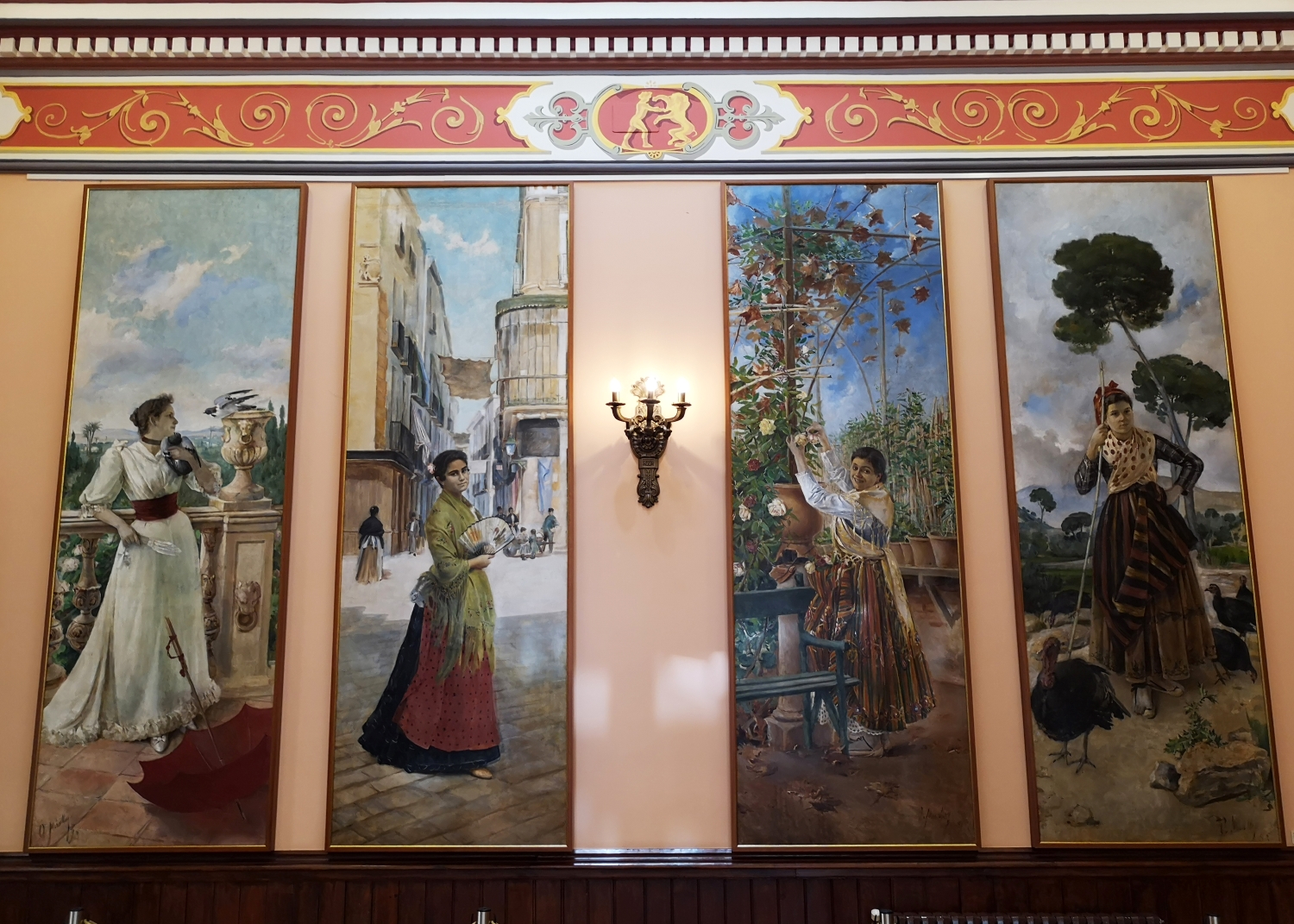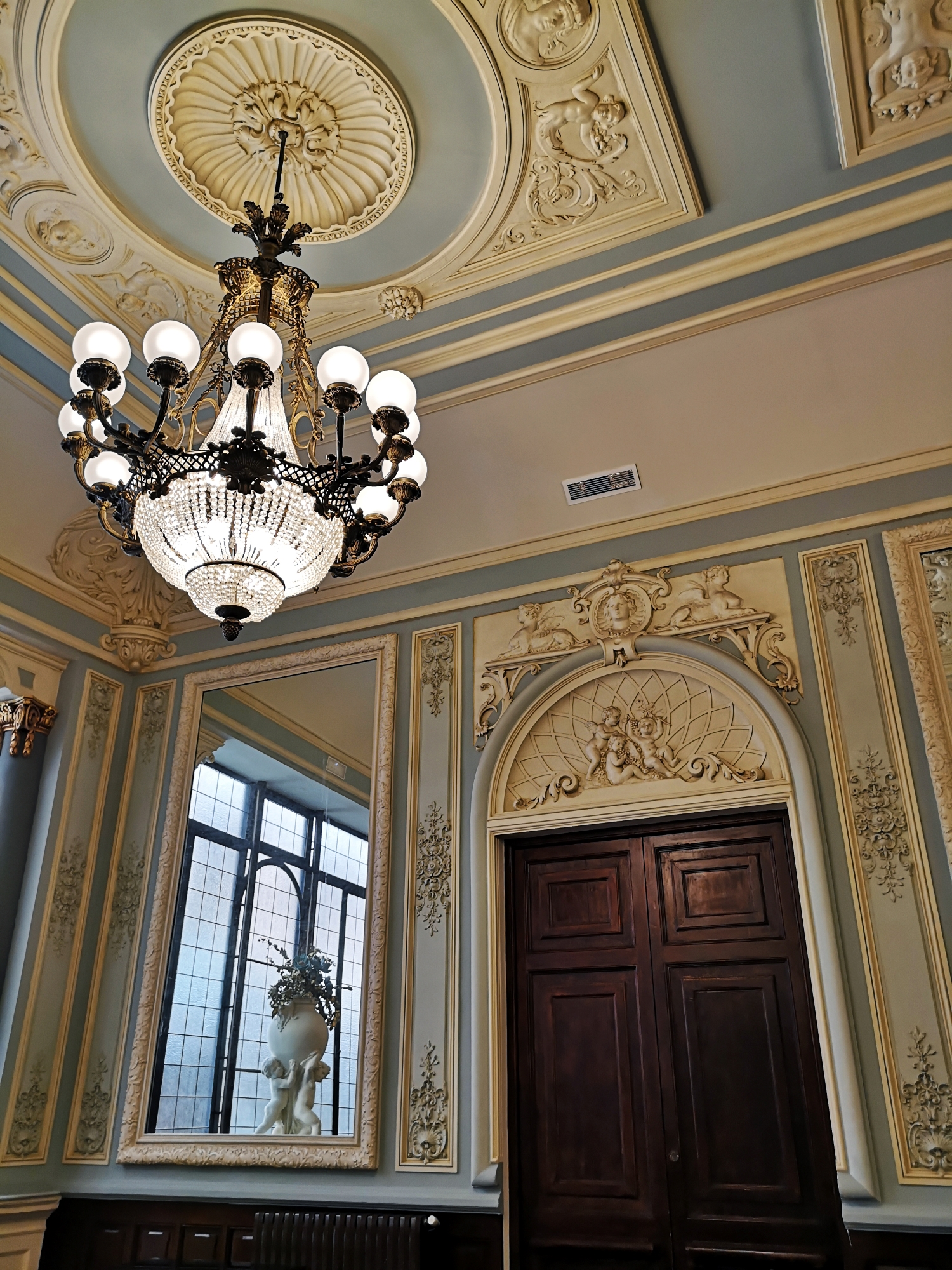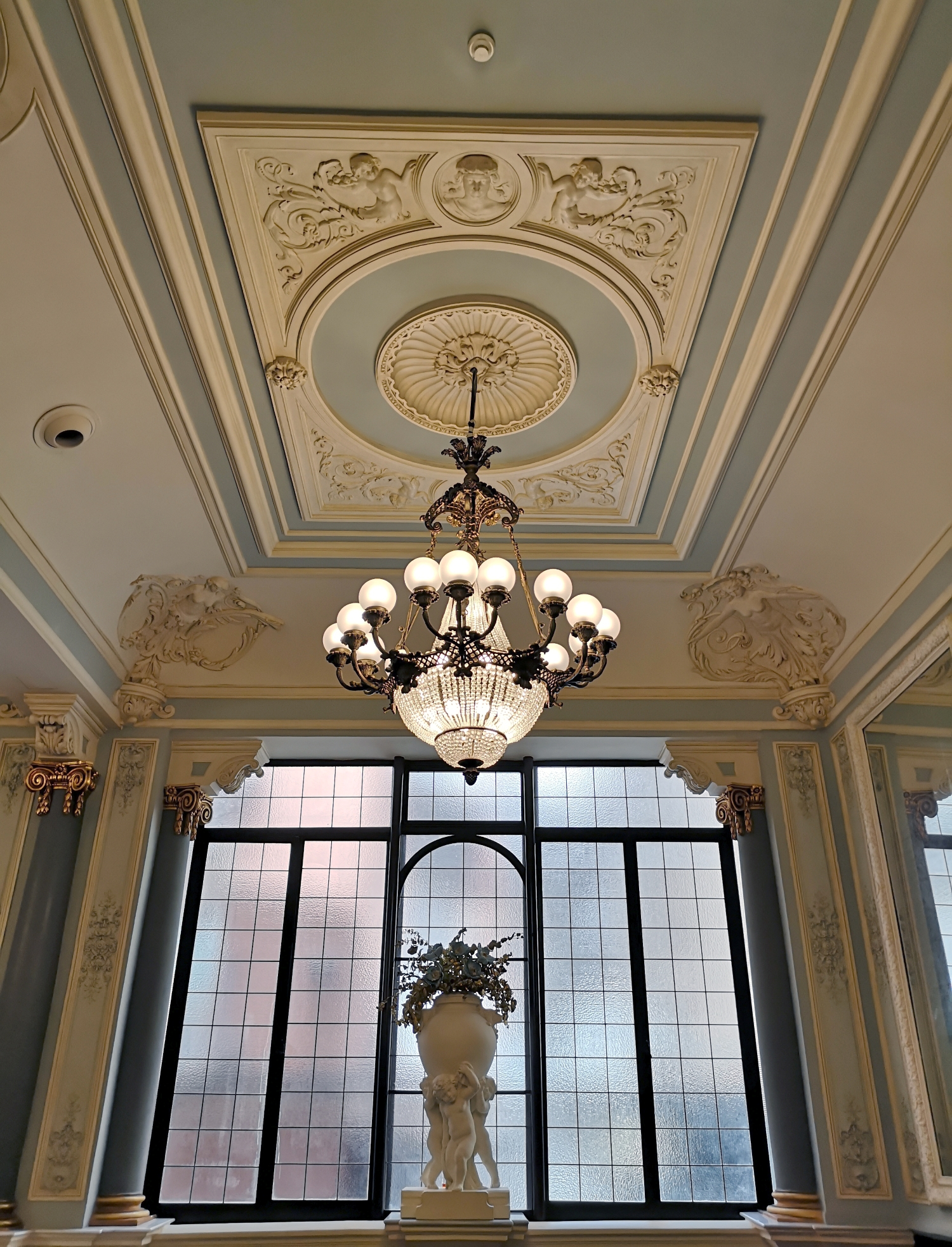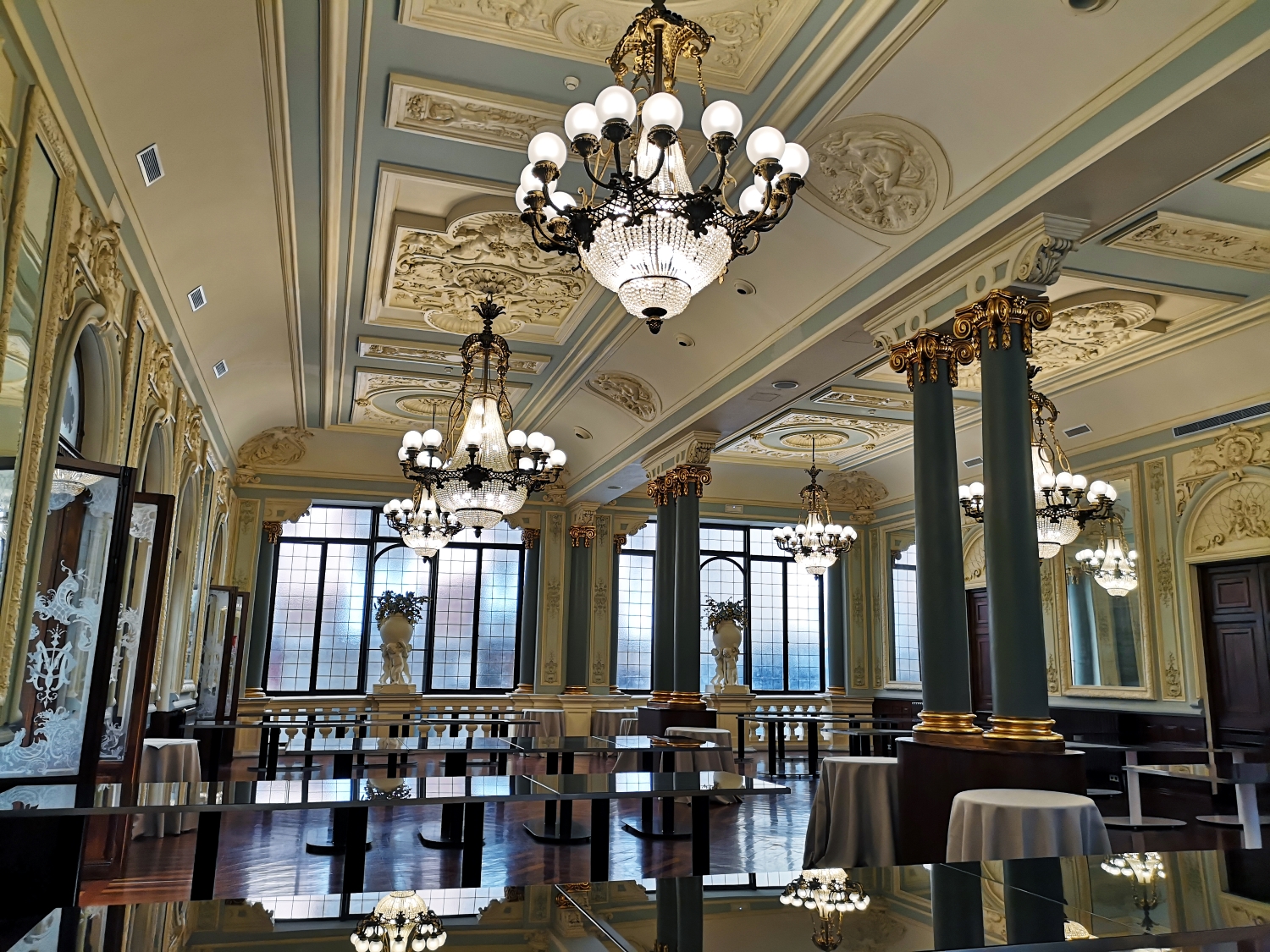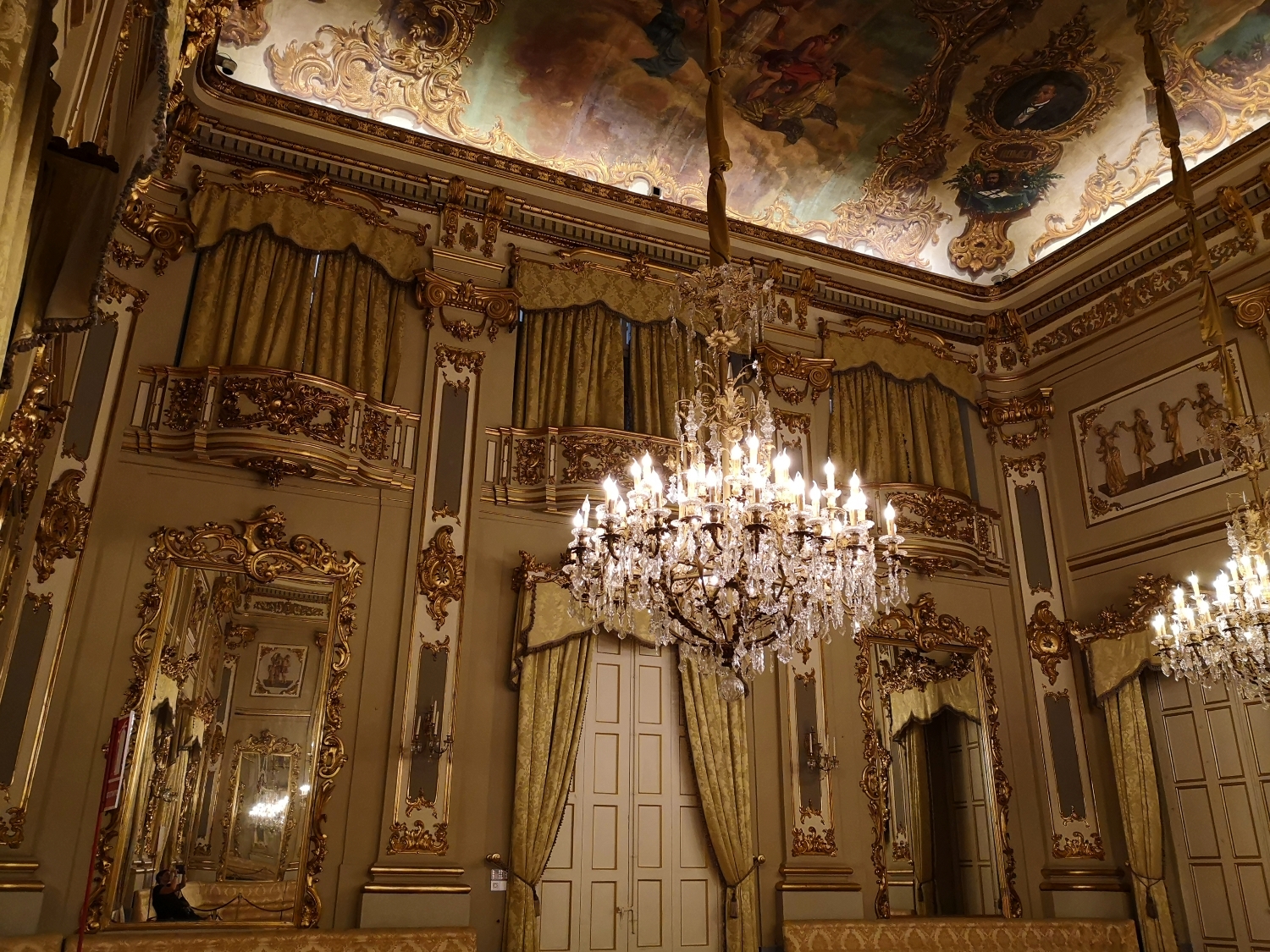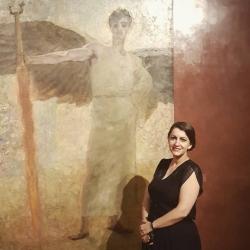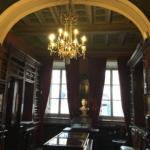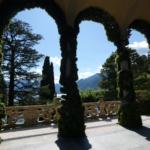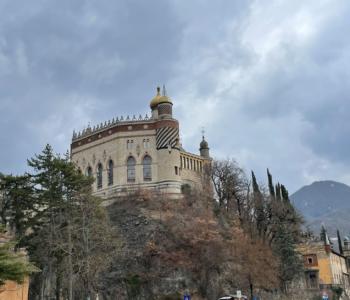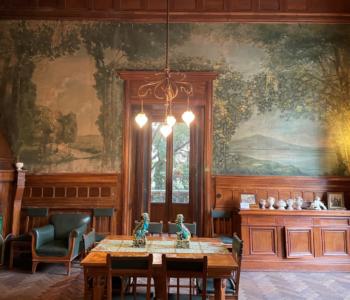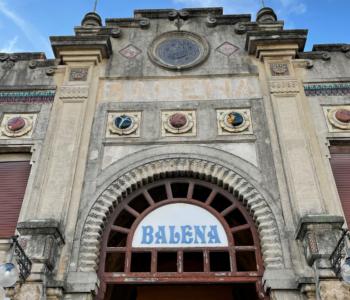Where: 18 Trapería street, just around the corner from the famous Murcia Cathedral.
Opening hours: 10.30 am to 19.30 pm; ticket costs 5€ (audio guides and tour guides available on request)
Contact: casinomurcia@casinomurcia.com
Website: realcasinomurcia.com
________________________________________________________________________________________________
The Royal Casino of Murcia is one of the most beautiful and best preserved 19th century buildings in Spain, is located in the historic center of the small city of Murcia, in the south of the country. It currently houses the Royal Casino of Murcia Society, a private institution founded in 1847 with more than 1600 members nowadays.
The Society started small, using different buildings around the city for its meetings, but soon their increase in member numbers made obvious the need for a proper, bigger place. Between the years 1853 and 1902, they acquired a number of houses, integrating them into one single space until the entrance through Trapería street was finished finally in 1902. The Casino features different architectonic styles as elements have been added through the years. It was declared a National Historical Building in 1983 and it was completely refurbished in 2006 after years of decay. The Casino as we know it today reopened in 2009 and was awarded the title of Royal by the former King of Spain, Juan Carlos I. Currently the Casino hosts different cultural activities such as concerts, exhibitions and similar events as well as private celebrations of the Society.
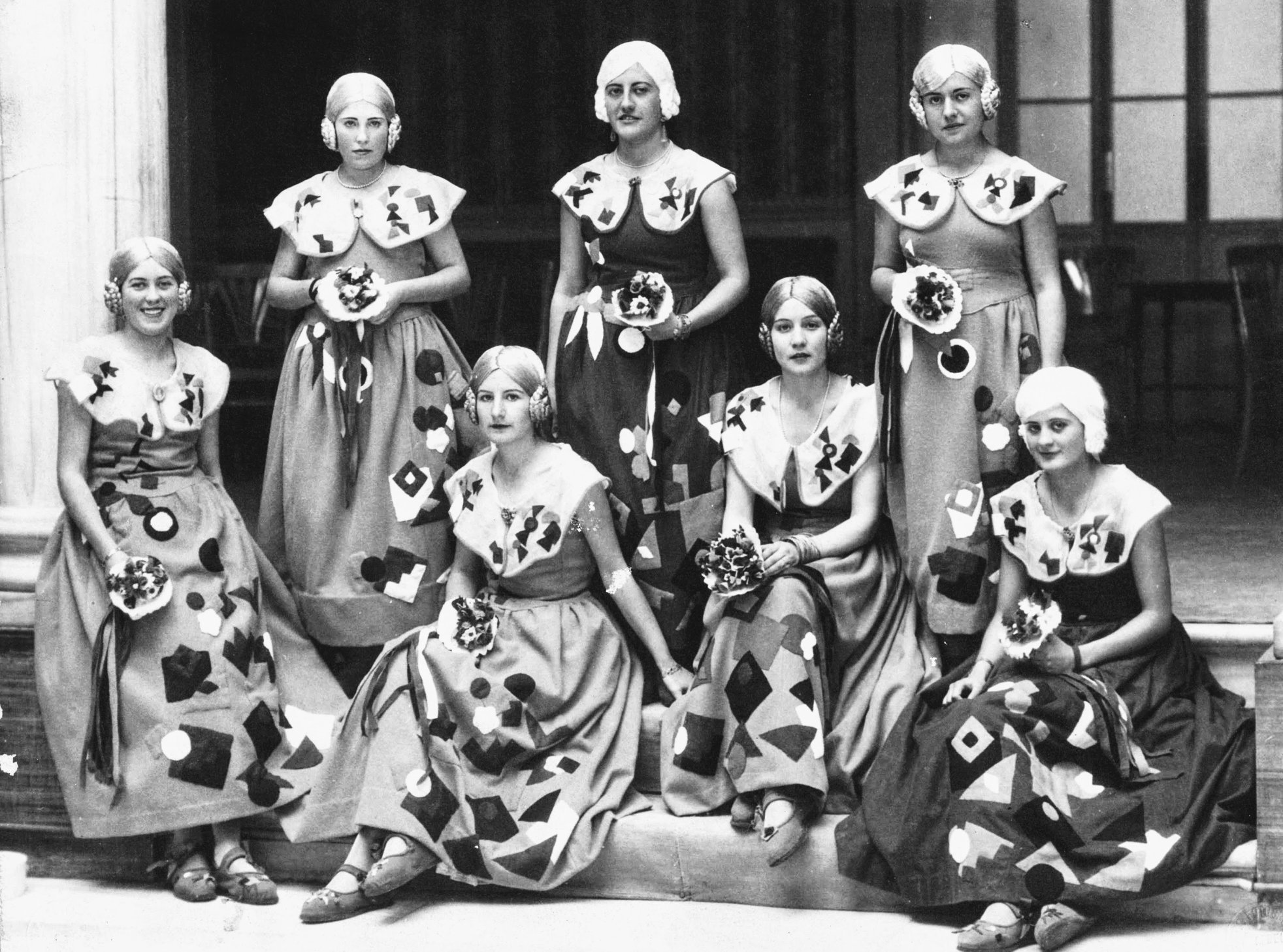 Pictures from some special parties in the 30’s
Pictures from some special parties in the 30’s 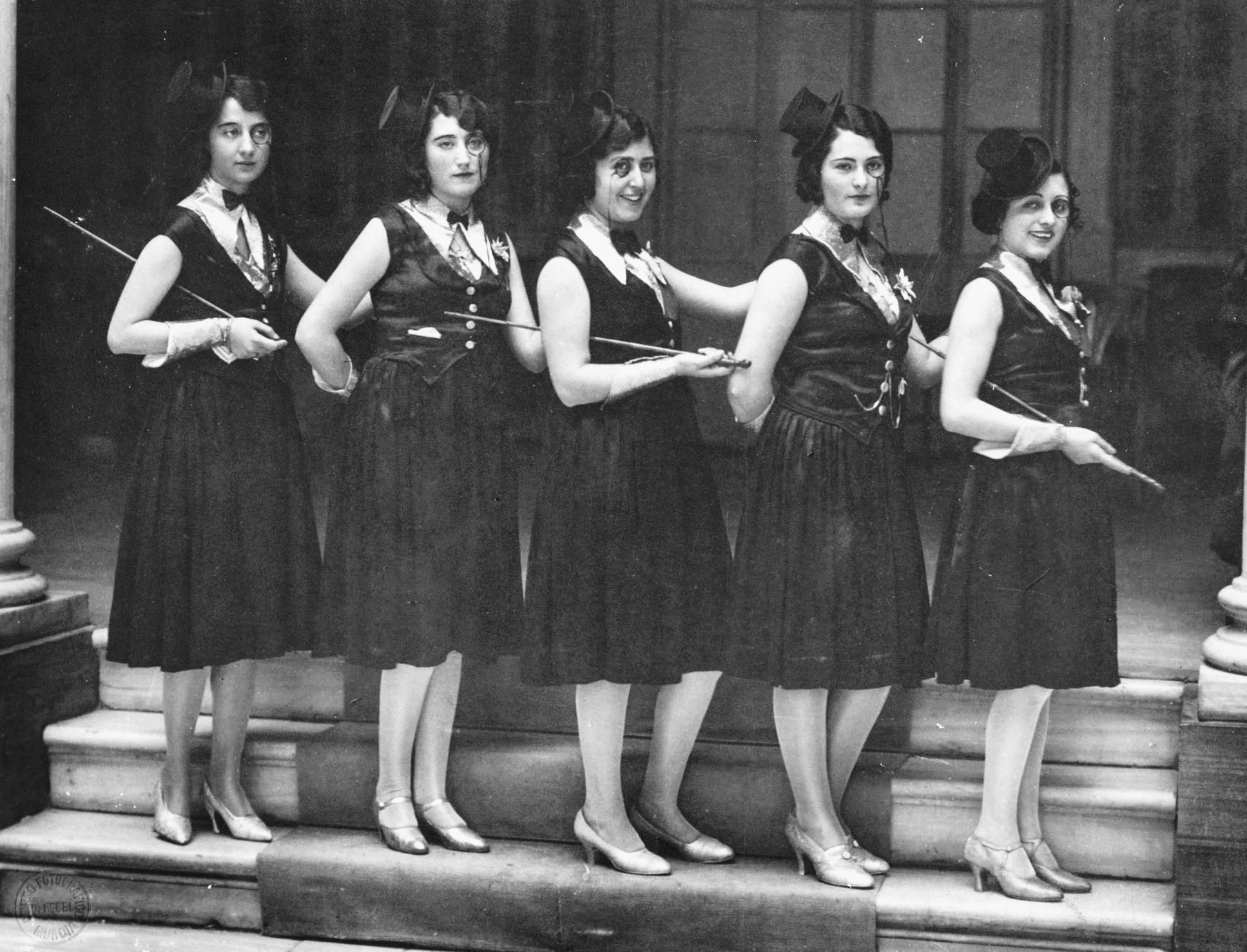
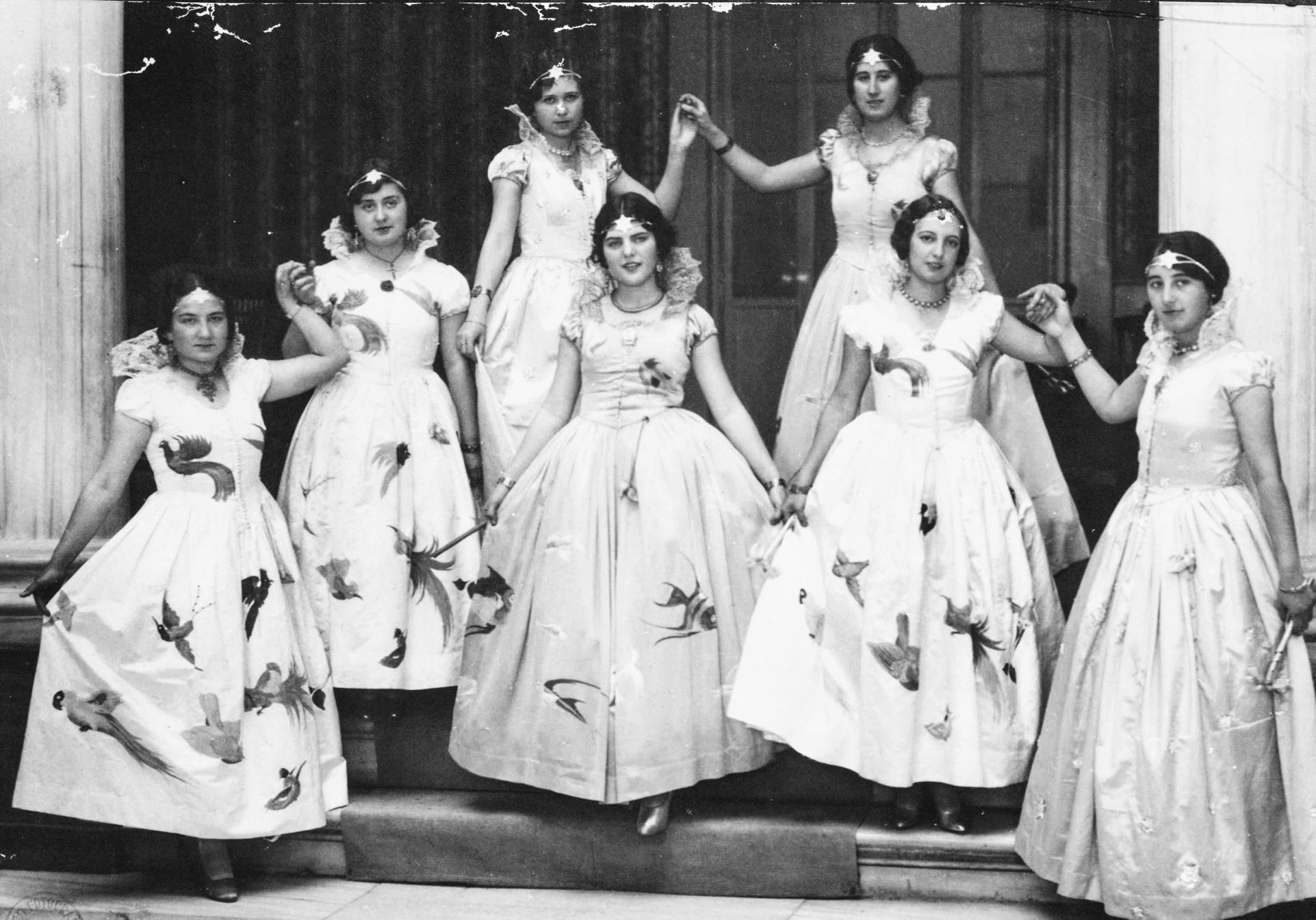
Facade and Entrance Hall
One of the most impressive elements of the Casino may be its facade. It was designed and built in 1902 by the sculptor Manuel Castaños and the architect Pedro Cerdán. Once inside, the entrance hall features two waiting rooms called “peceras”, the spanish for fish tanks, where only members are allowed to enter. Both peceras are incredibly rich and beautiful, in a neo-baroque style and feature recently restored sculpture reliefs by Manuel Castaños. The style of these rooms inspired later the decor in the famous Mansion of Parque Florido that houses the incredible Lázaro Galdiano Museum in Madrid nowadays.
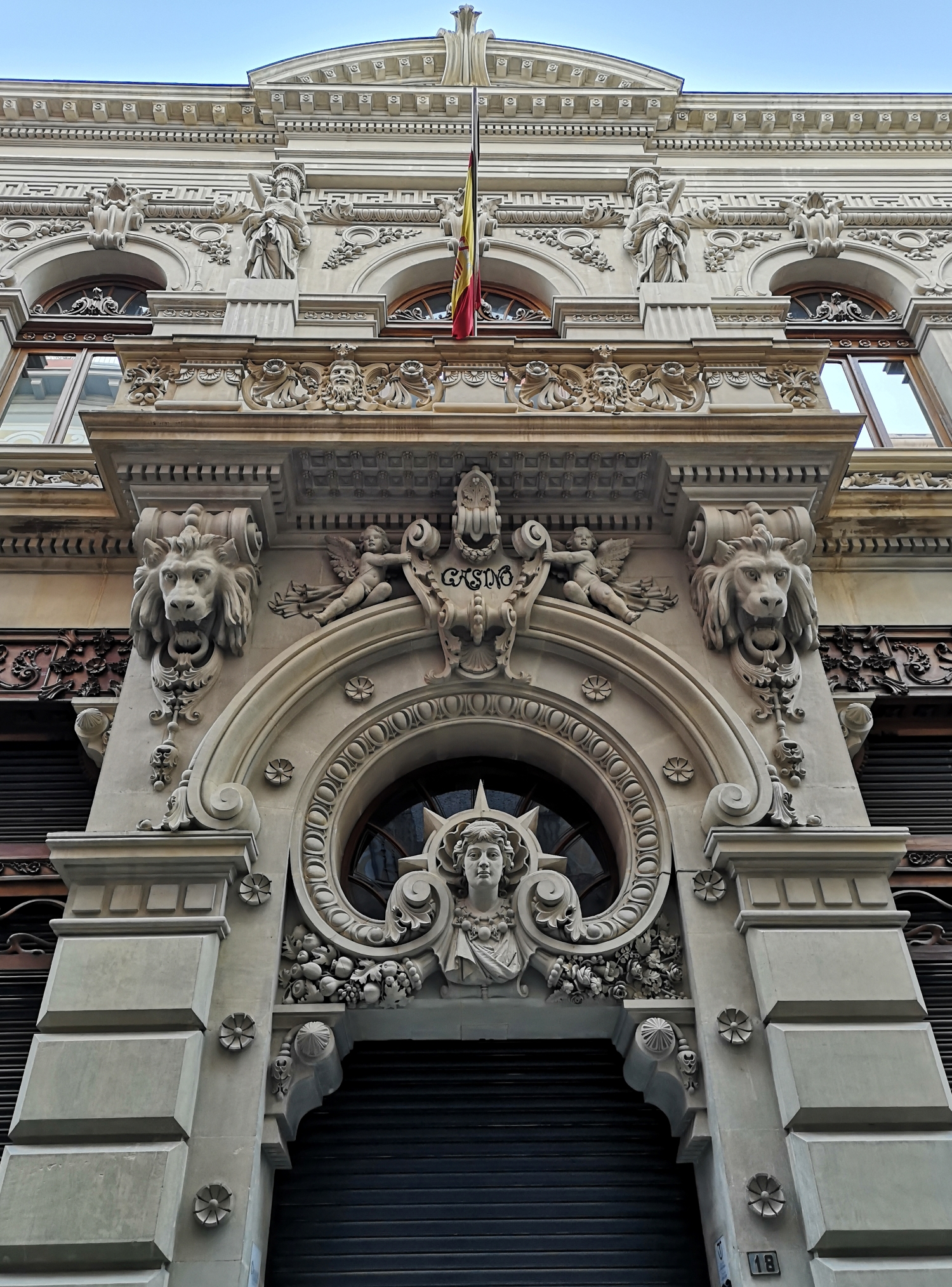
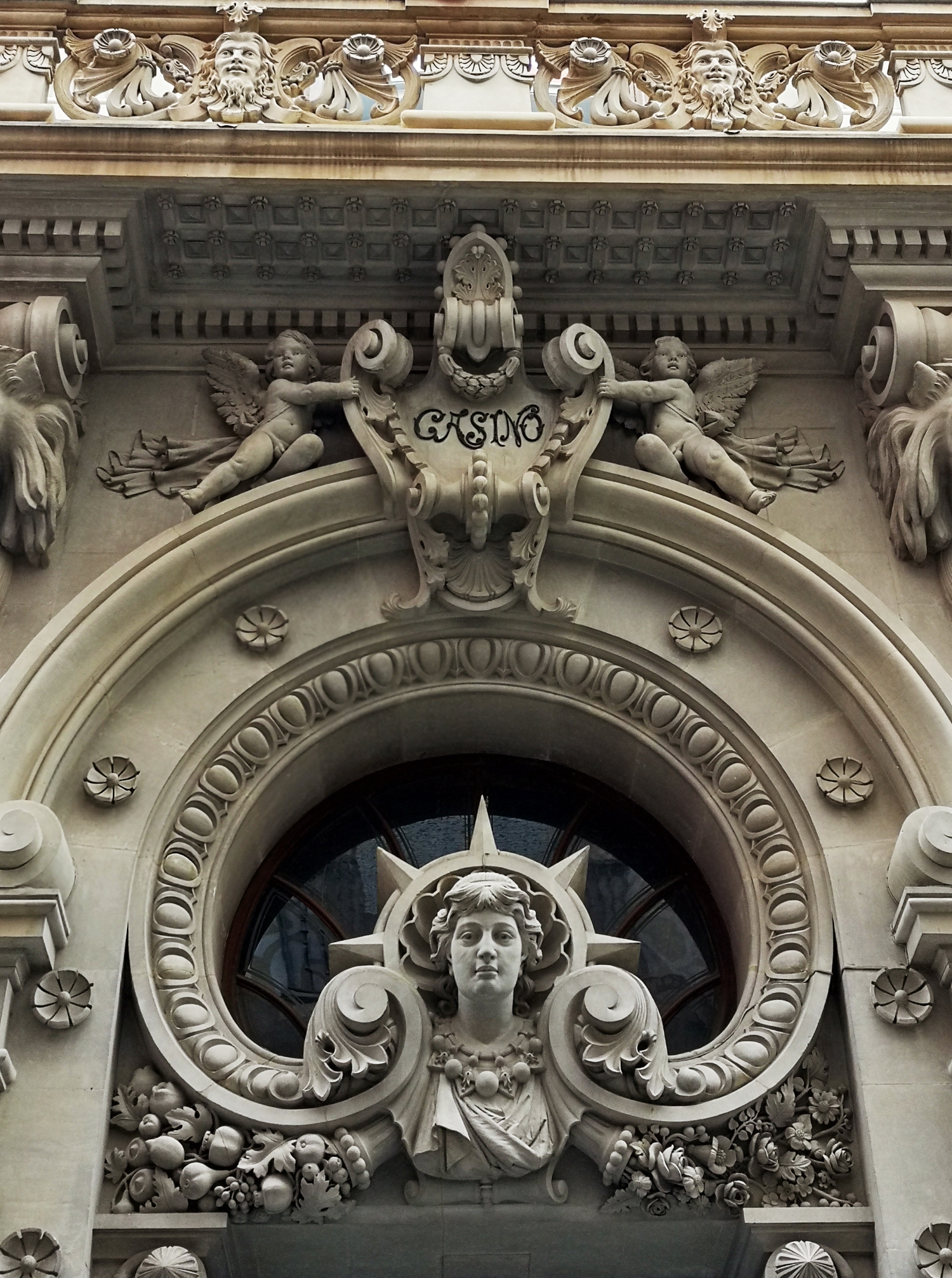
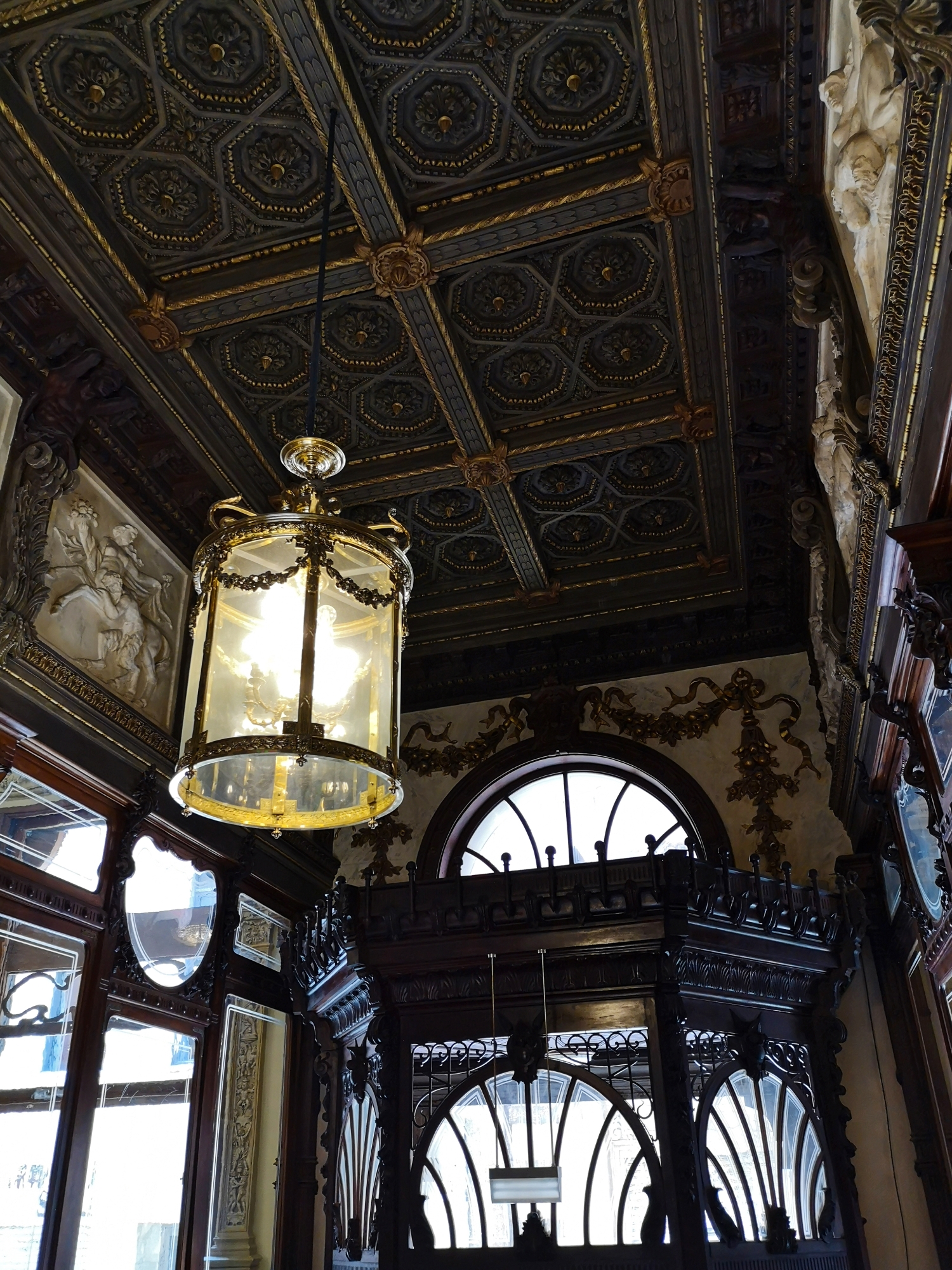
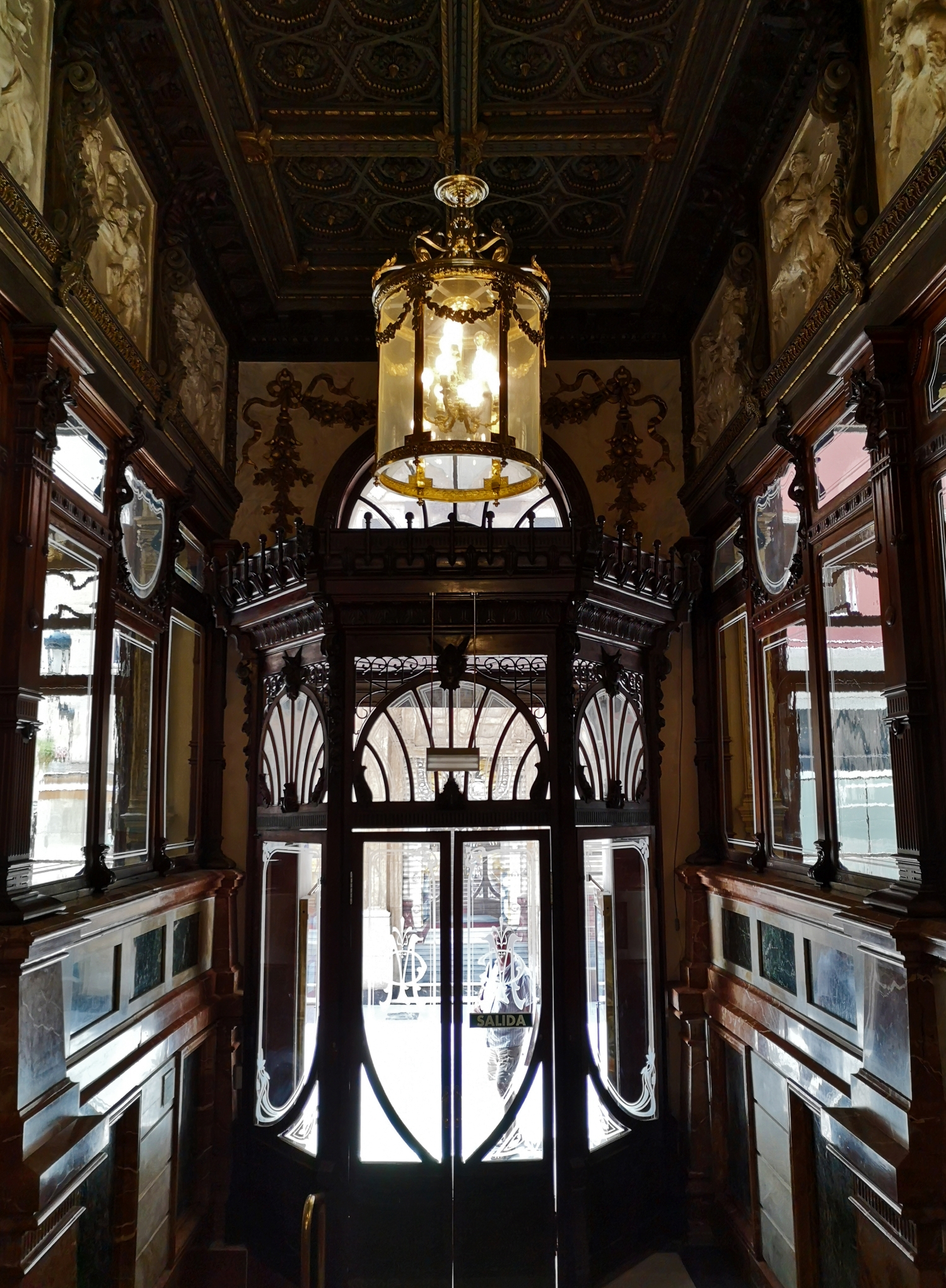
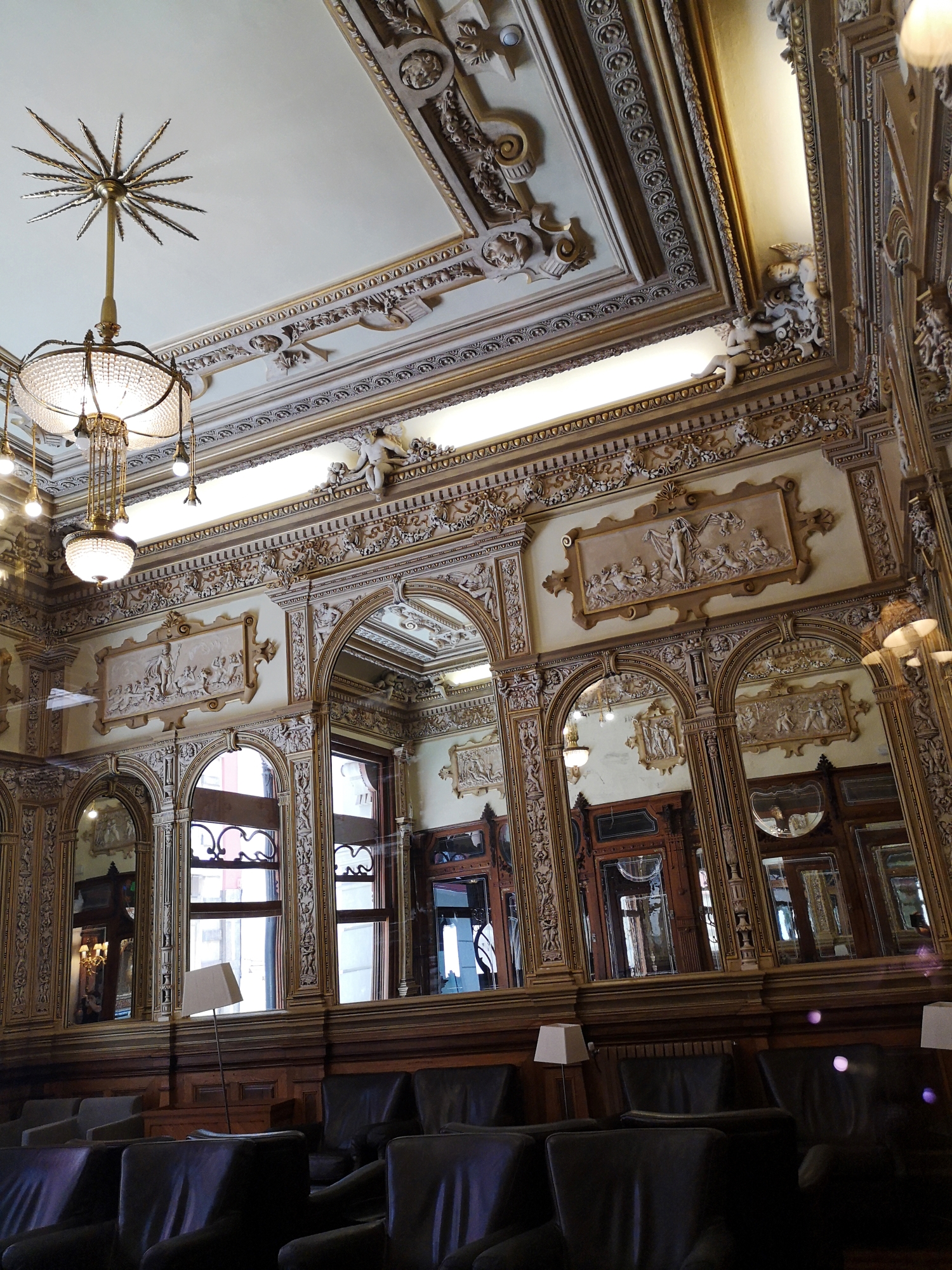
The Arabic Hall
Crossing the small neo-baroque entrance, we arrive in a very impressive Arabic hall in neo-nazari style, inspired by the Alhambra in Granada and Seville’s Alcázar, with a beautiful dome in stained glass (an iron that lets the light in), giving a golden glow and colourful reflections over the walls. This room was again designed by Manuel Castaños and for its construction more than 35000 sheets of gold leaf were used. All around the dome there’s an Arabic inscription reading “Nothing greater than Allah”.
From the Arabic hall, a series of galleries connect all the rooms of the Casino. The galleries have a beautiful and luminous glass dome, they do have a different height than the rooms because originally were streets joining the buildings together, before it all became one single space. The oldest gallery dates from 1866.
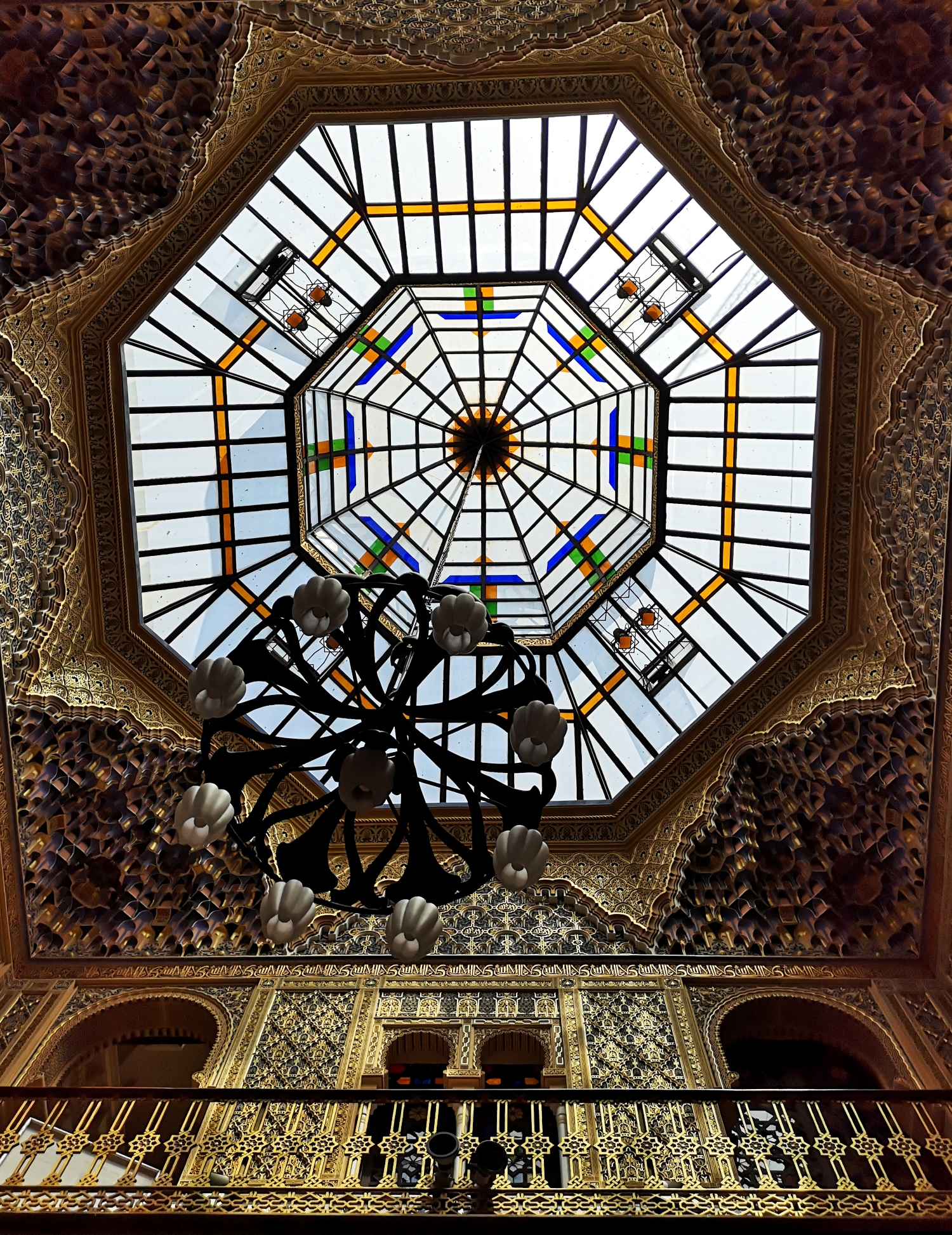
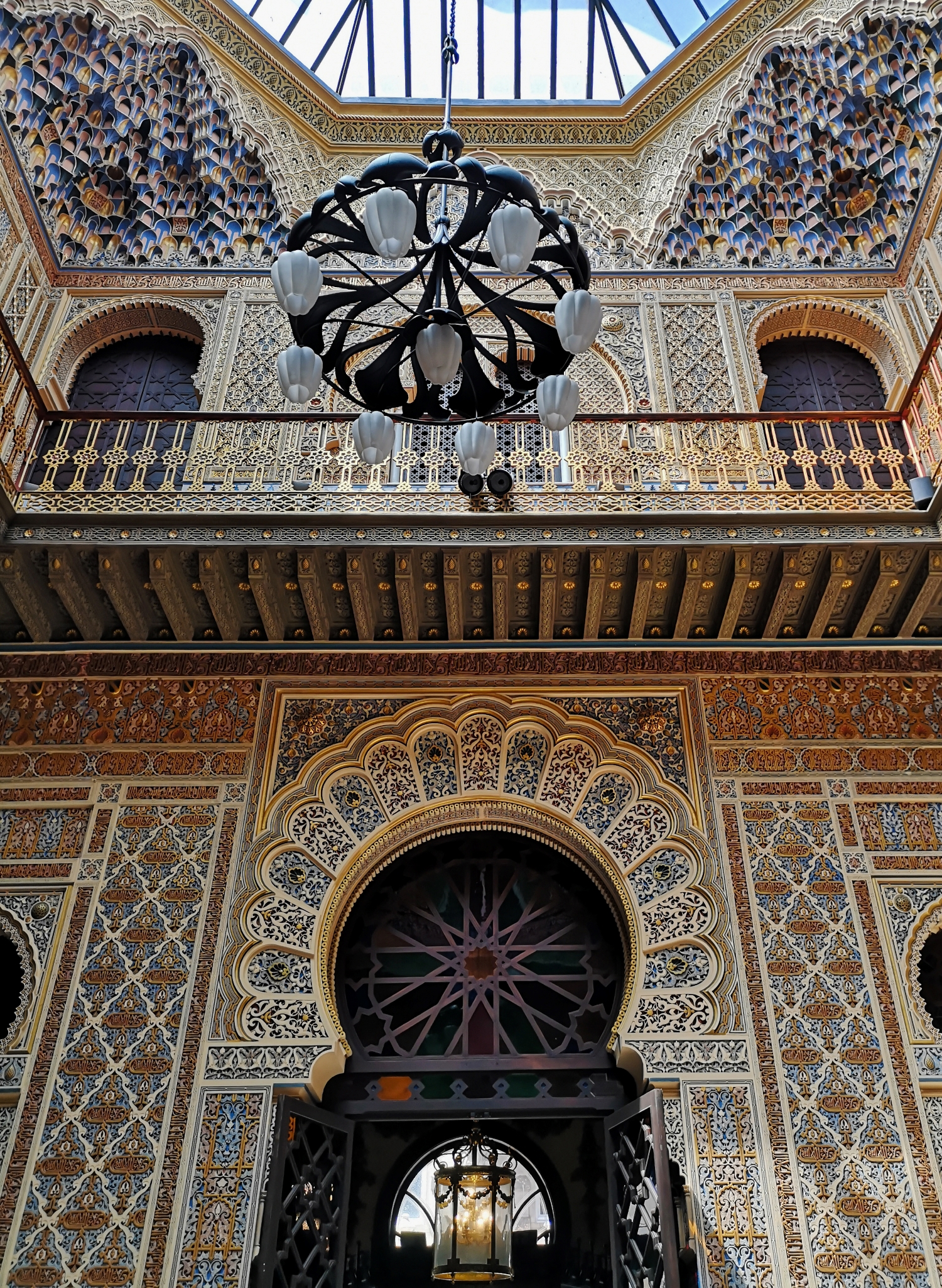
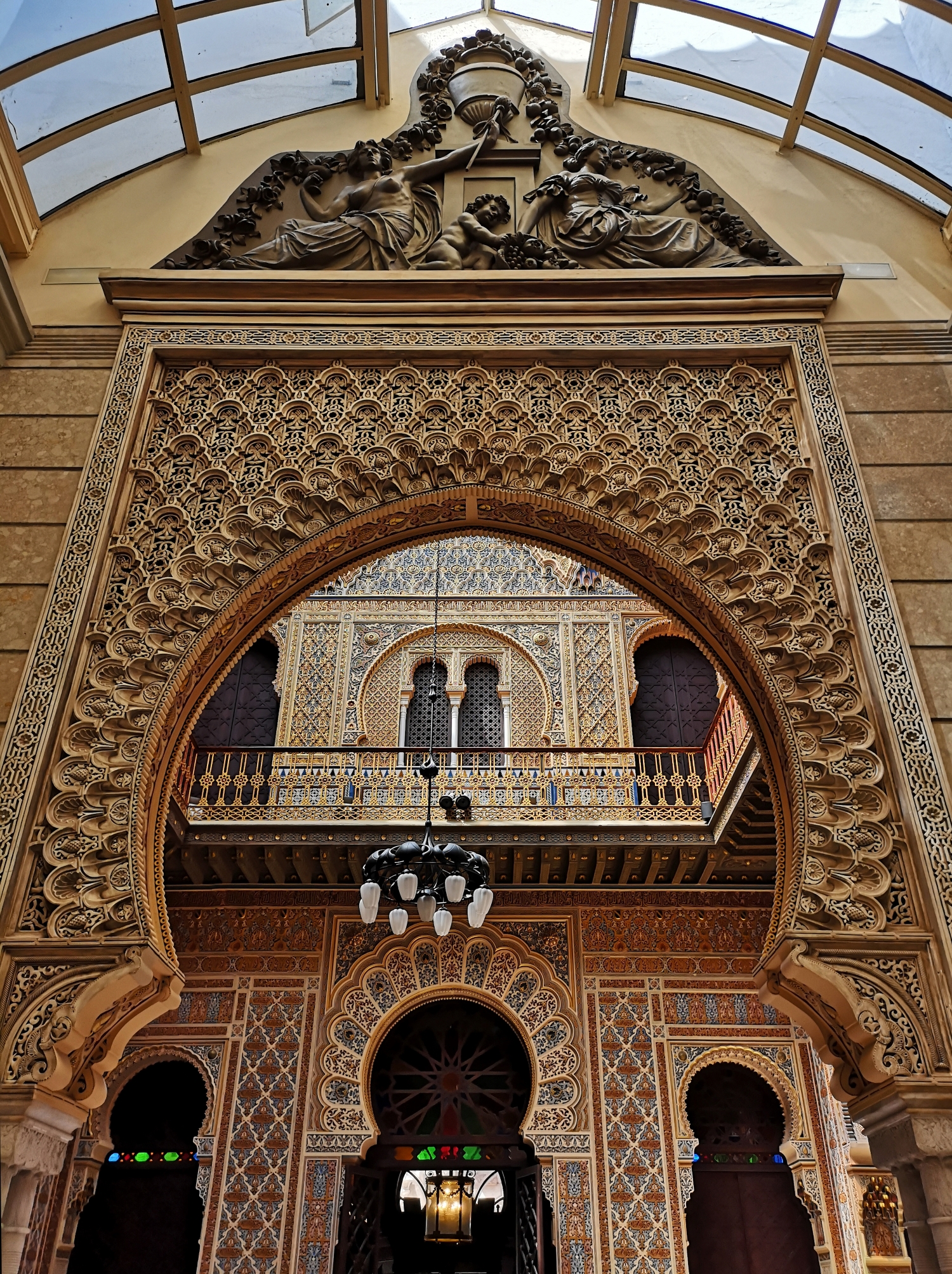
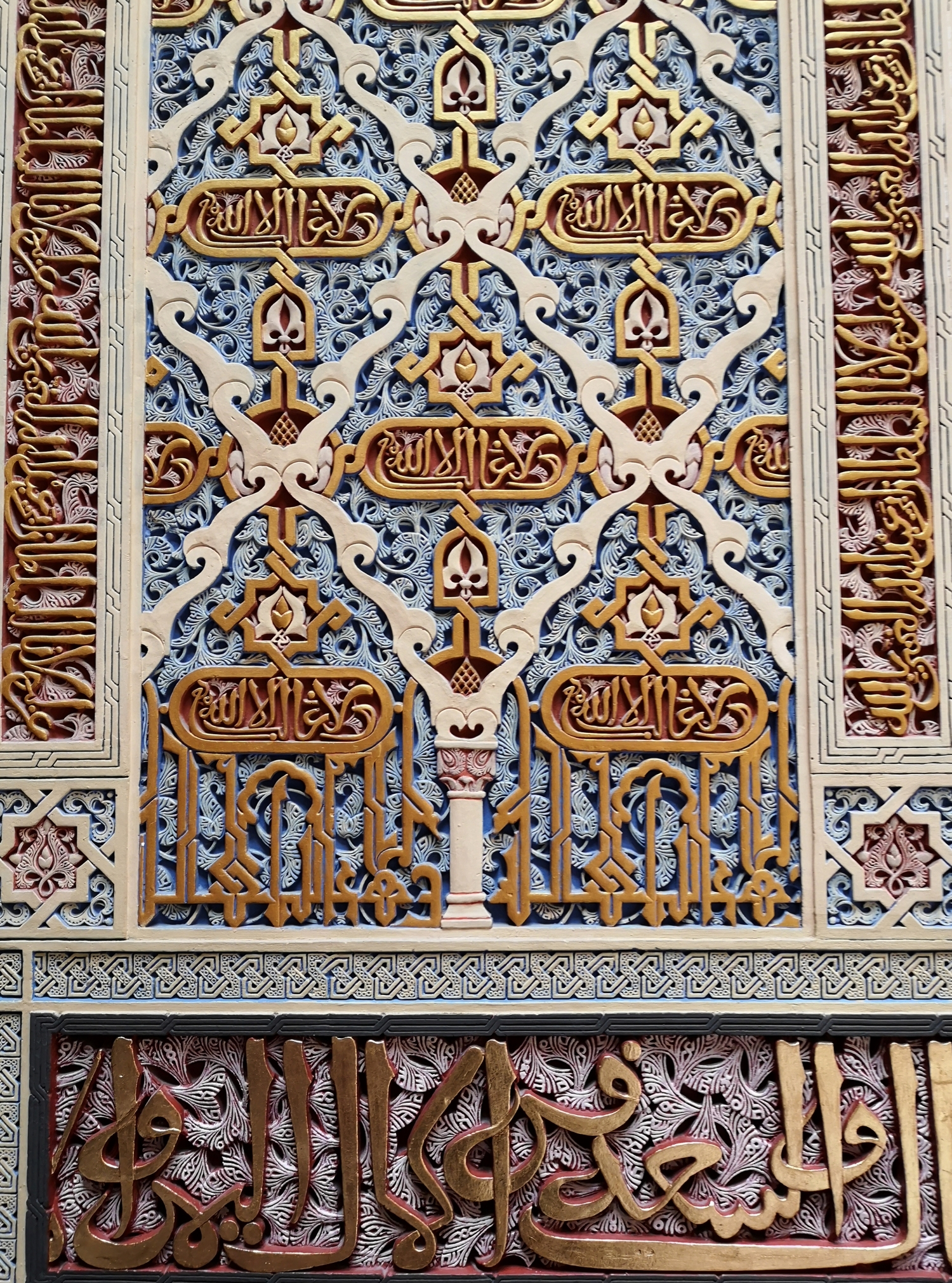
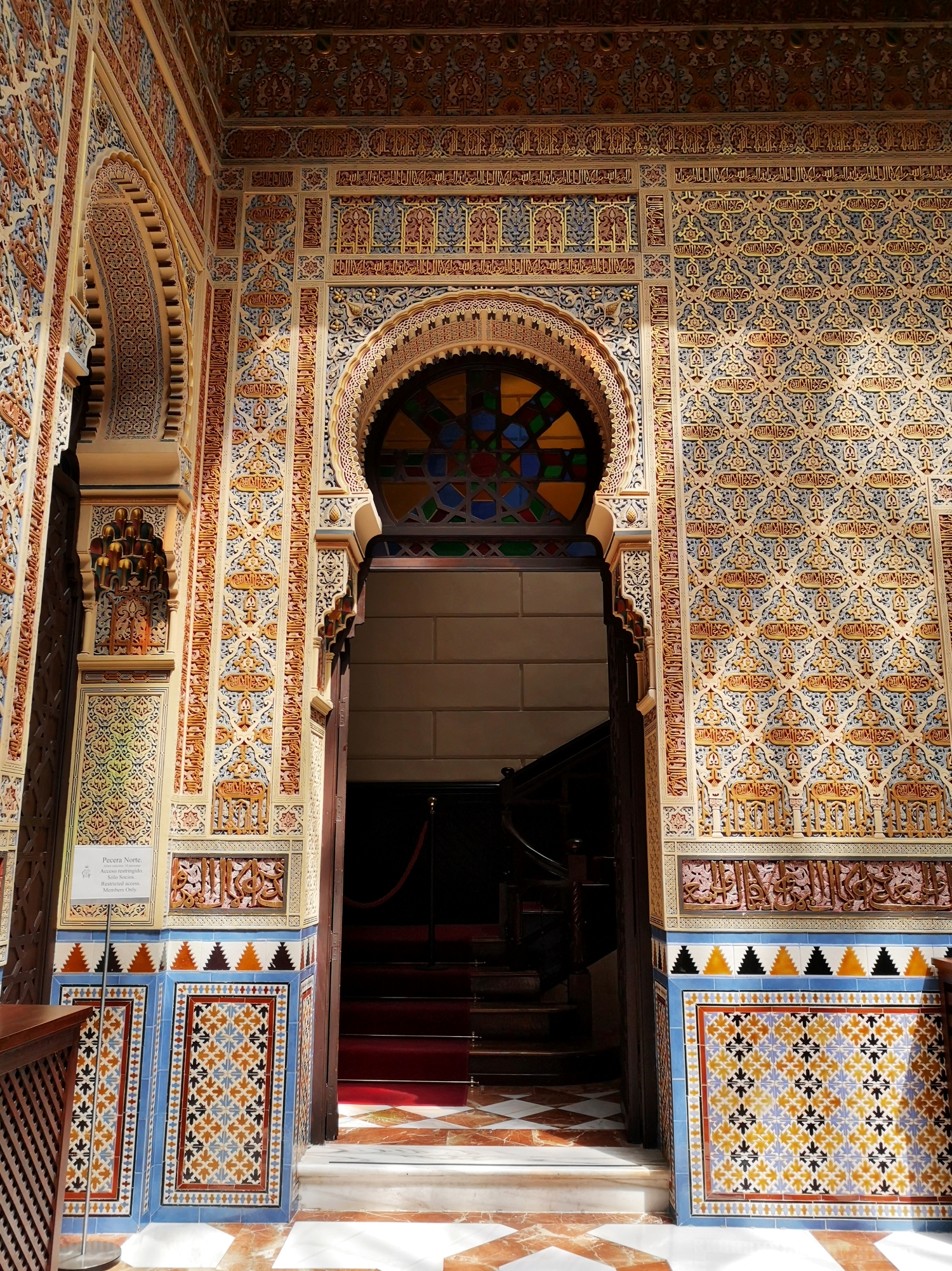
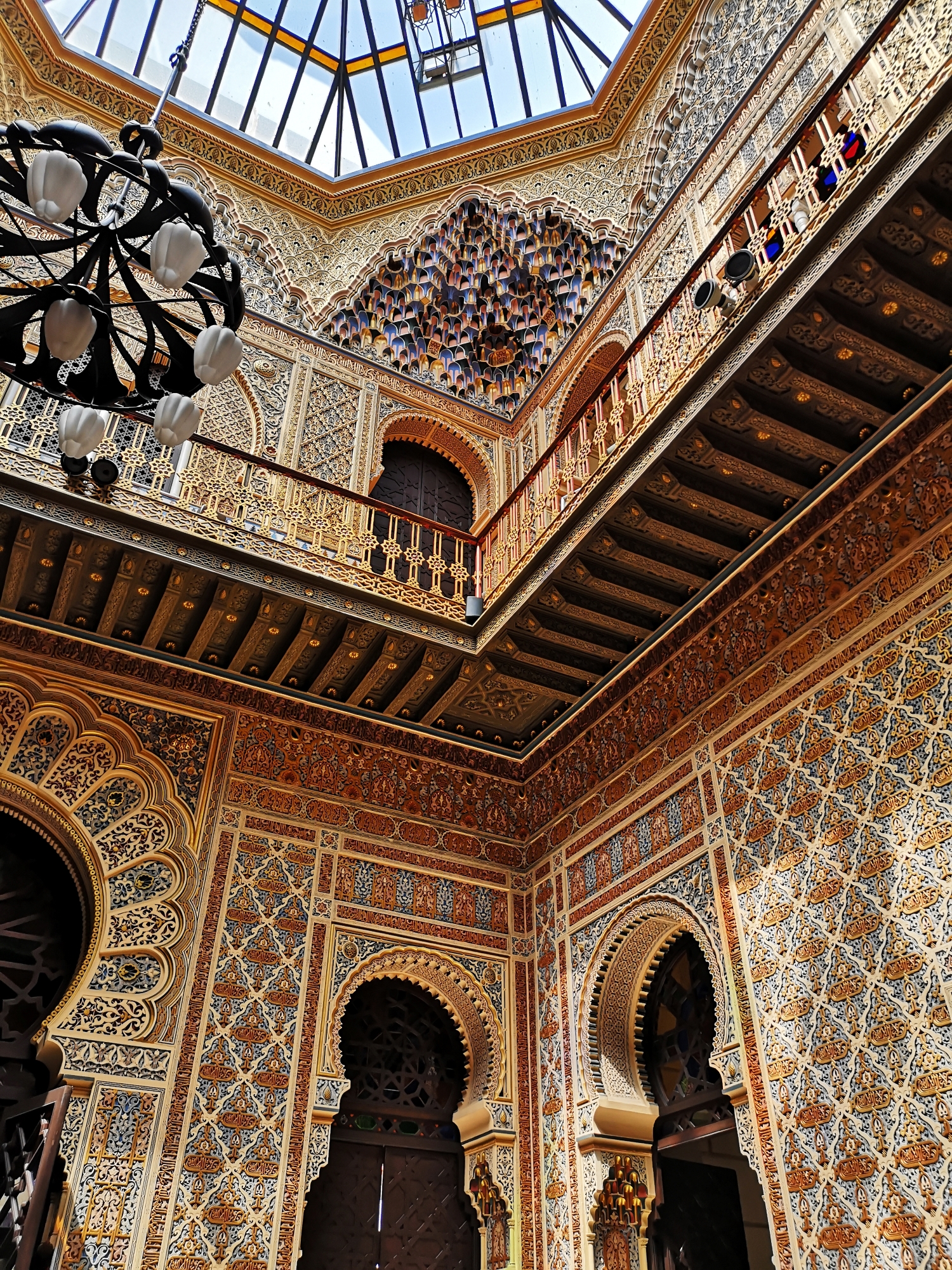
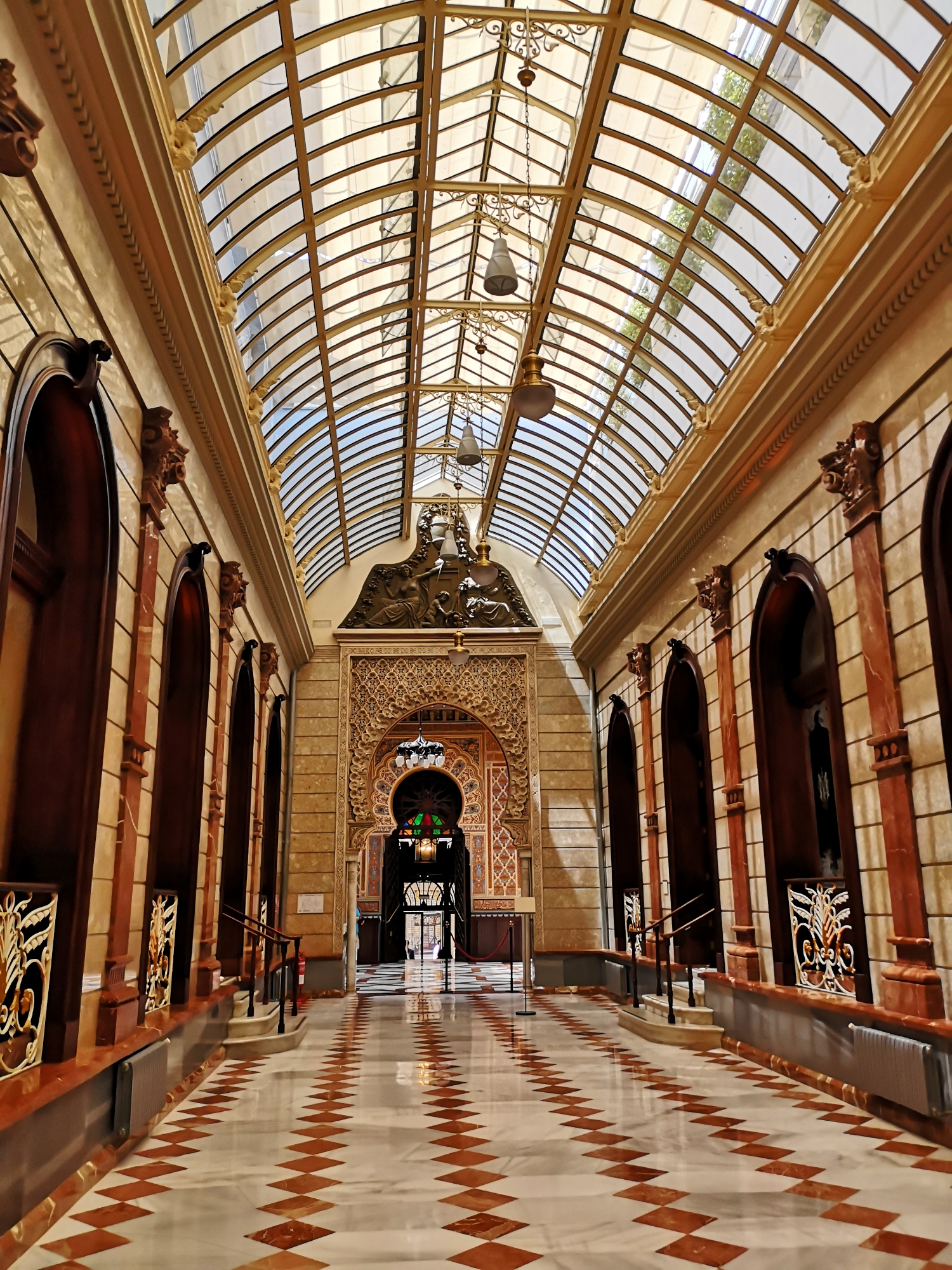
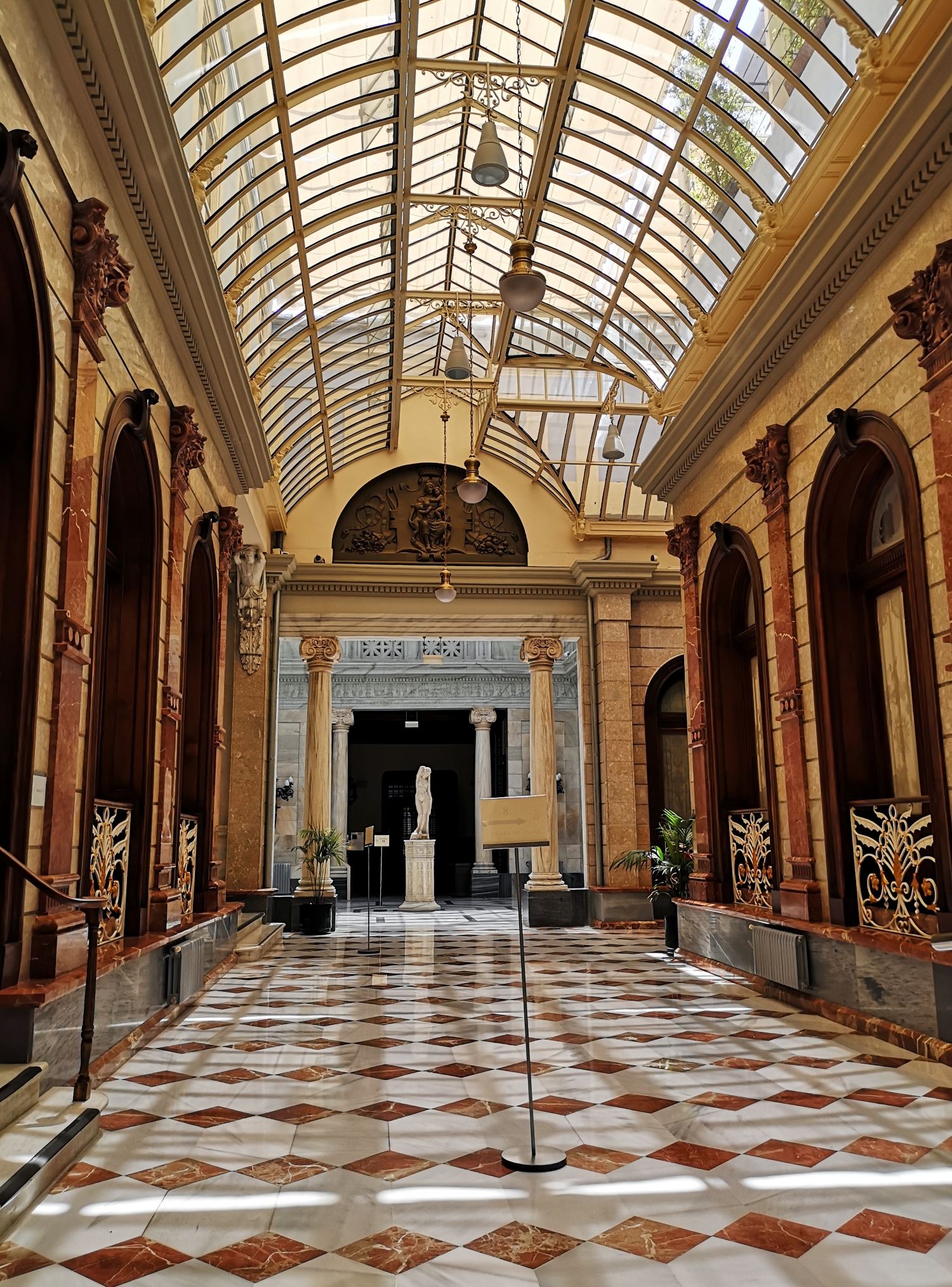
English Library
The first room to visit is the English library, built in 1913 by Waring & Gilow. This library is one of a kind because of the beautiful iron cast migrating flamingos that hold the carved wood book cabinets, representing the spirit of the 19th century traveller. The library contains more than 20000 books from the 17th, 18th and 19th centuries. There is a big skylight to let natural light in and over 25 study desks for members of the Casino. The spiral staircase leads to the book shelves but its interior is made of stucco paint and not wood, a common thing in Spain that even has its very own name: “trampantojo”.
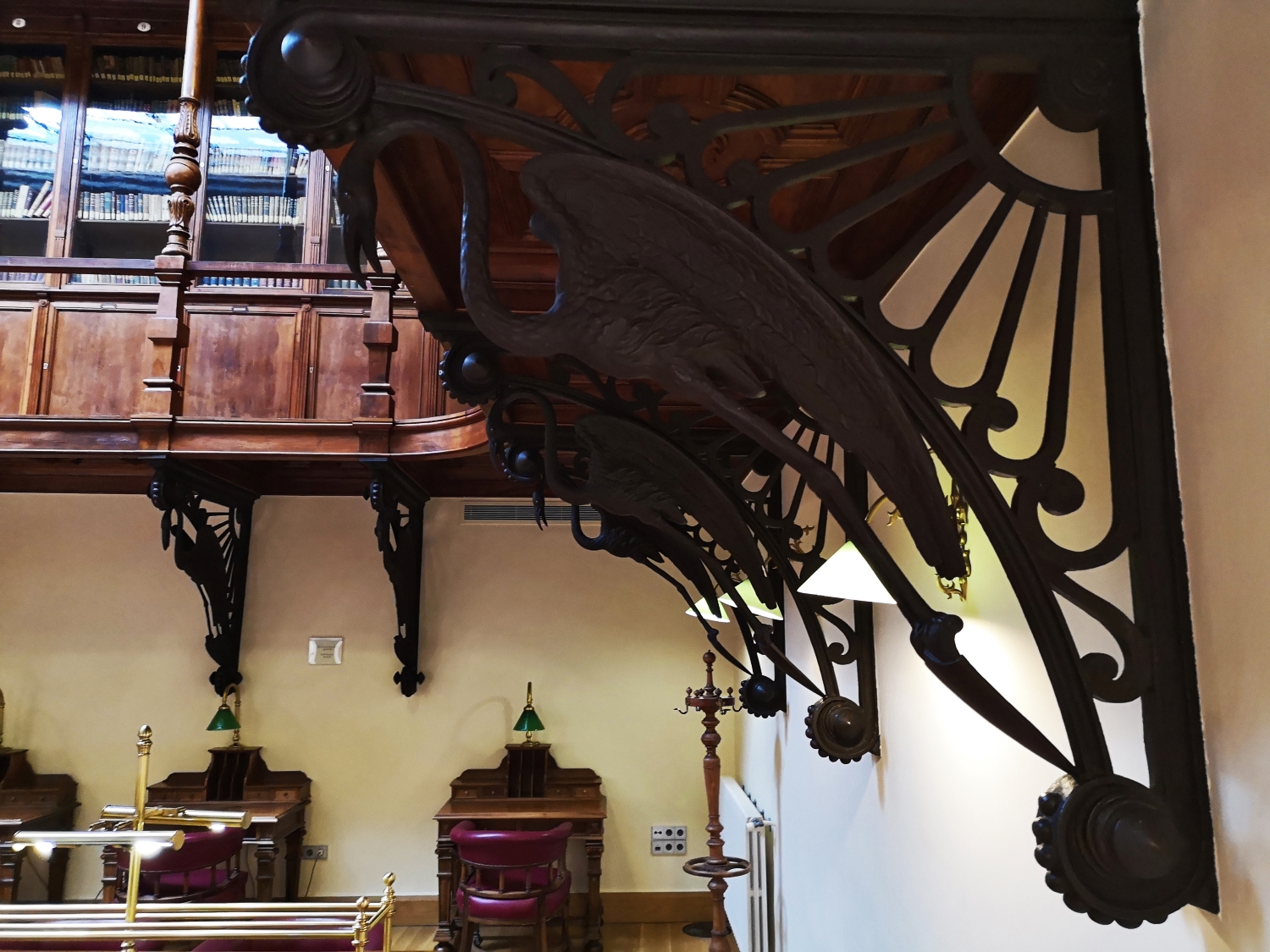
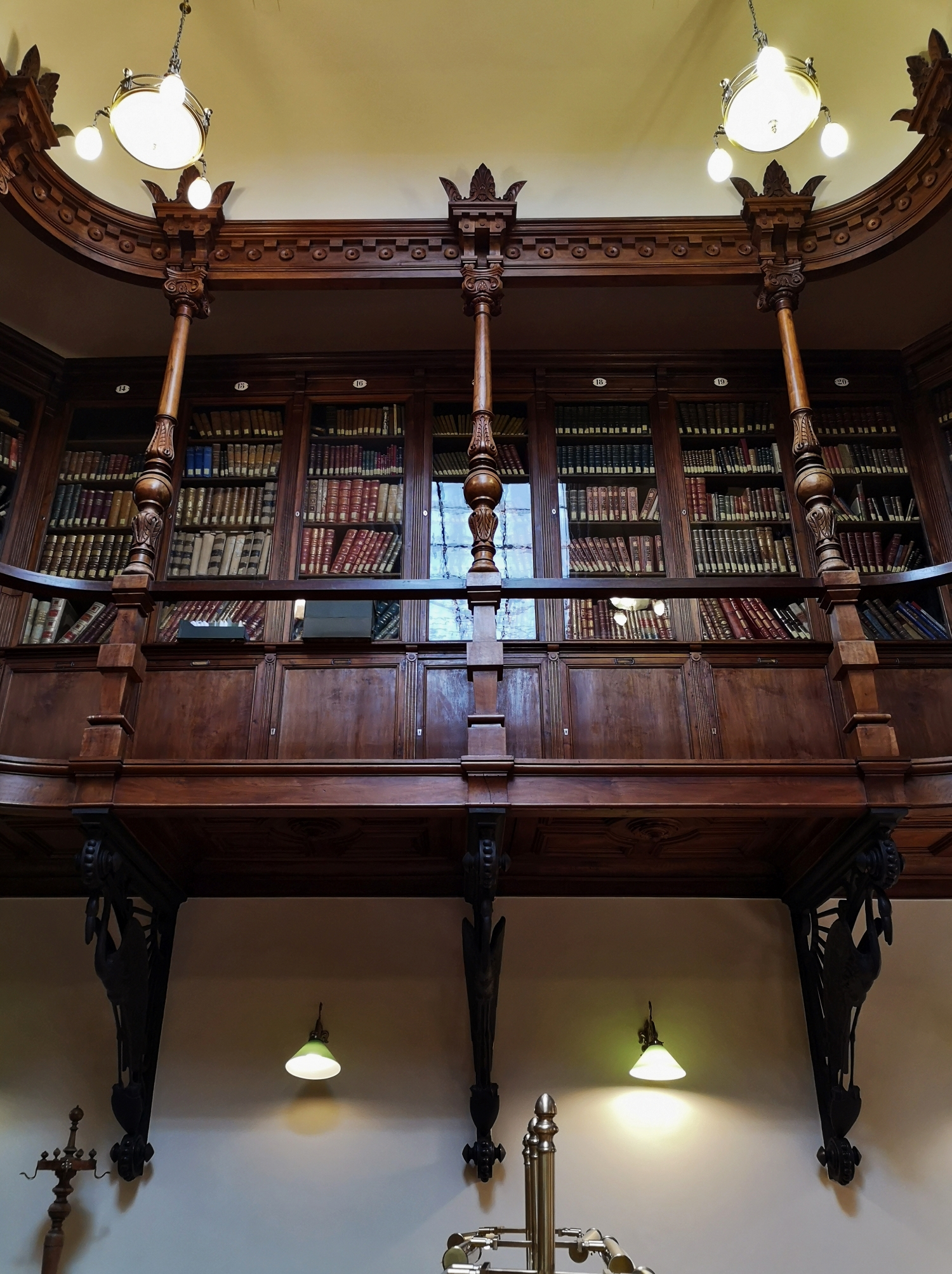
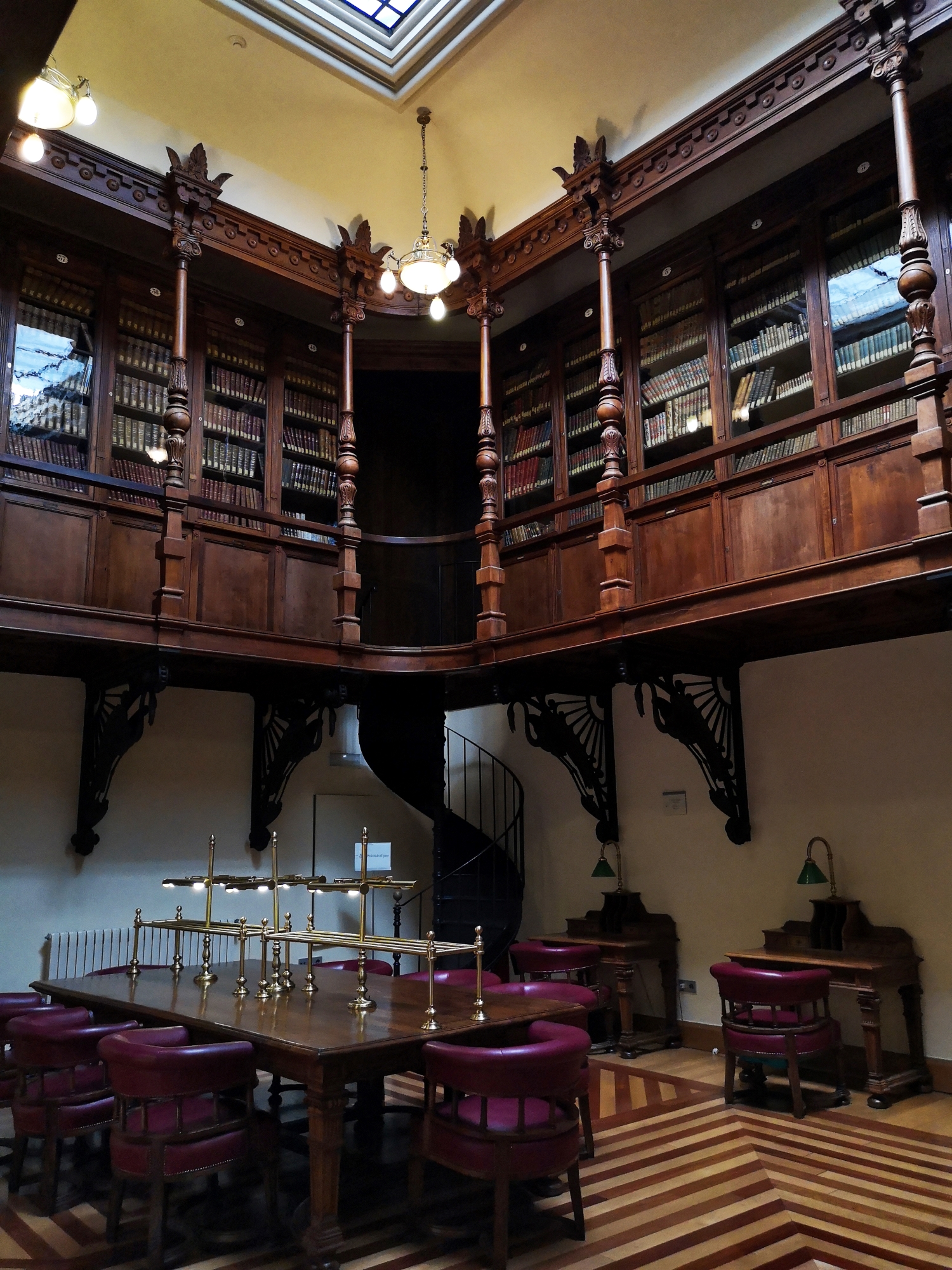
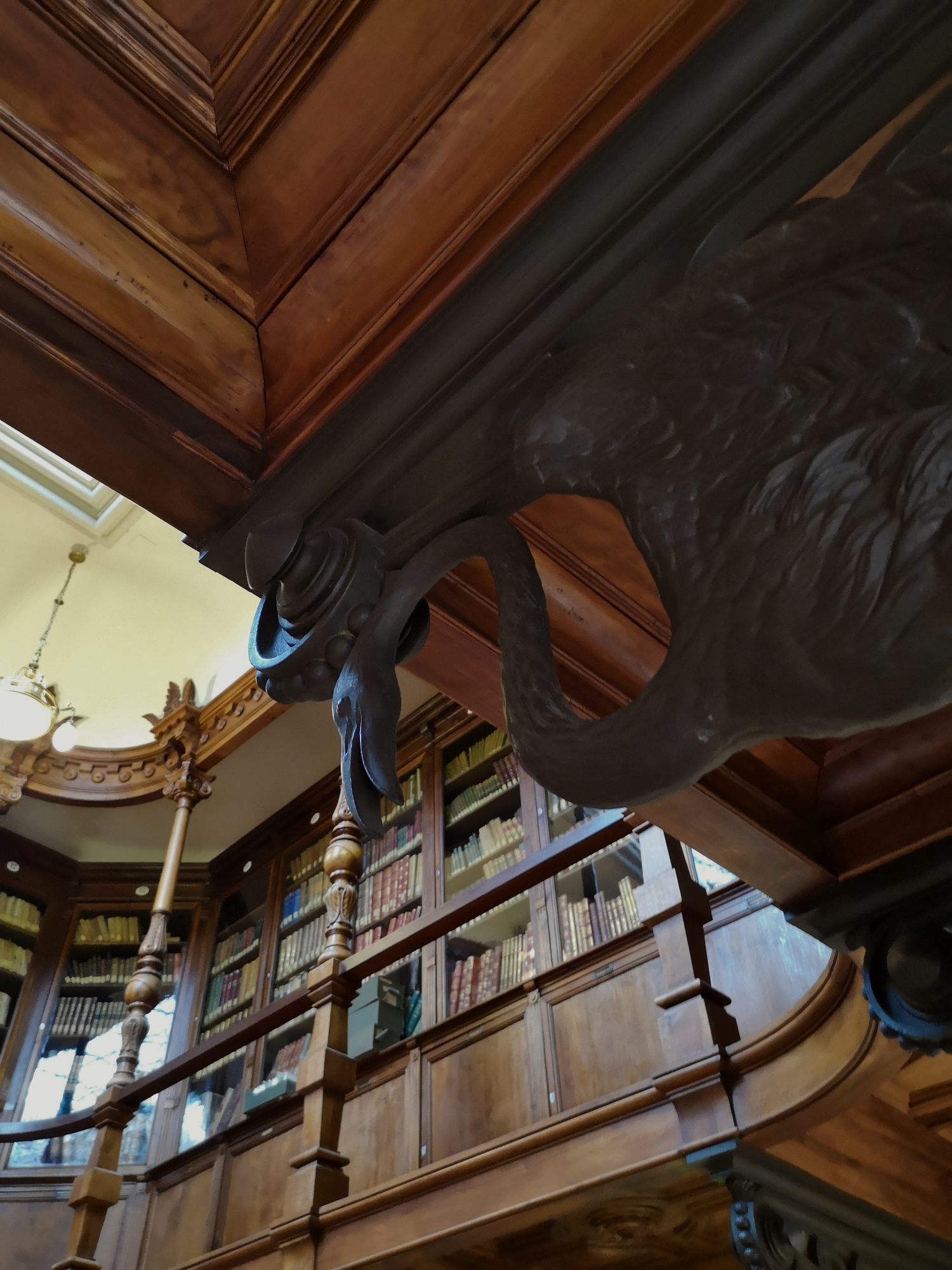
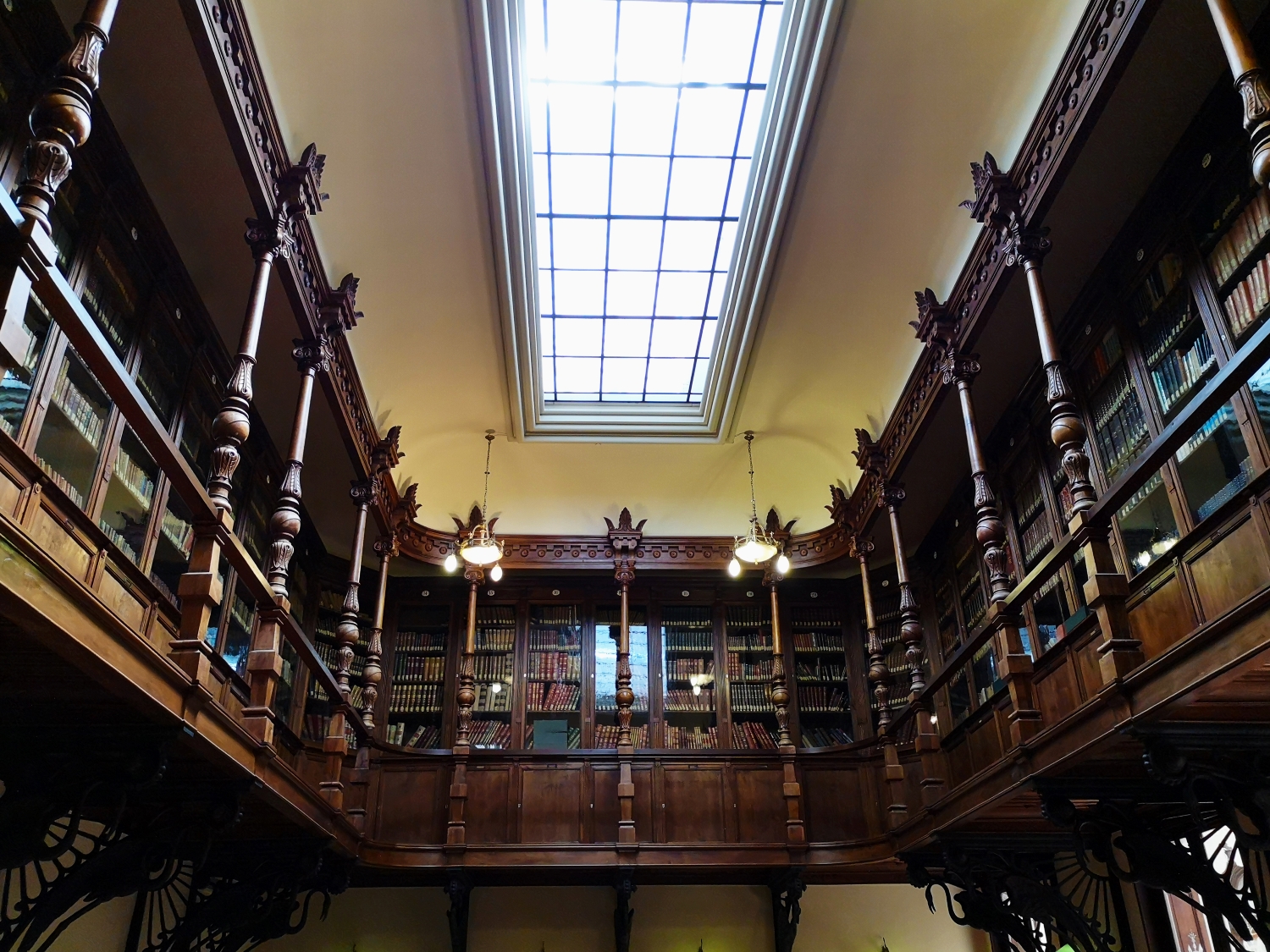
Congresillo
The next room in the visit is a small but elegant salon with golden silk walls and a beautiful ceiling that used to be a place for upper class meetings in the past. The most remarkable feature in this space are the Romantic paintings from the 19th and the early 20th centuries from Manuel Arroyo, Manuel Piccolo, and Obdulio Miralles. This last painter deserves a special mention as one of his paintings in the room, “La Modelo”, hides a sad story, the model portrayed had fallen in love with Miralles and after being rejected by him she ended taking her own life at only 27 years old.
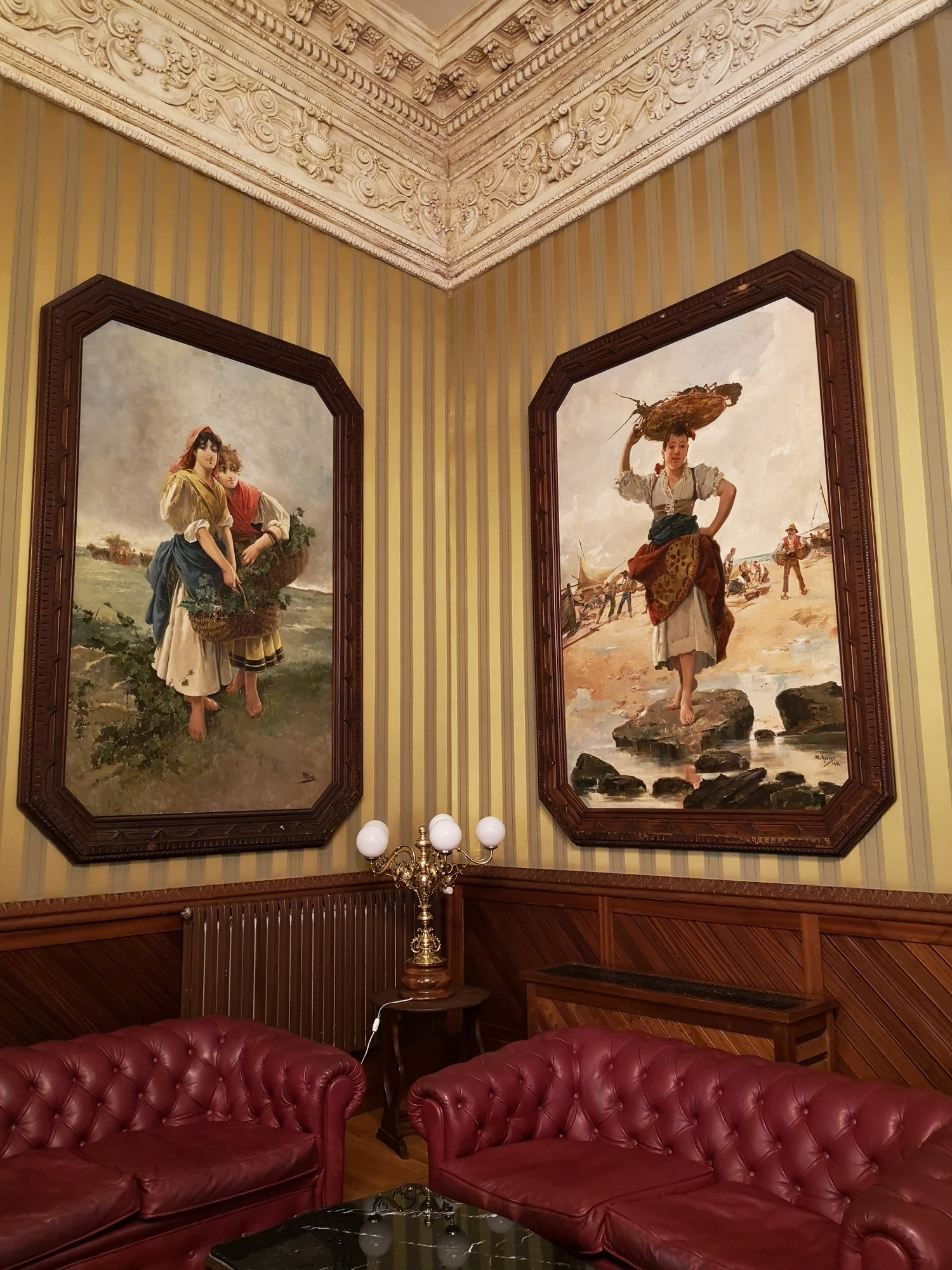
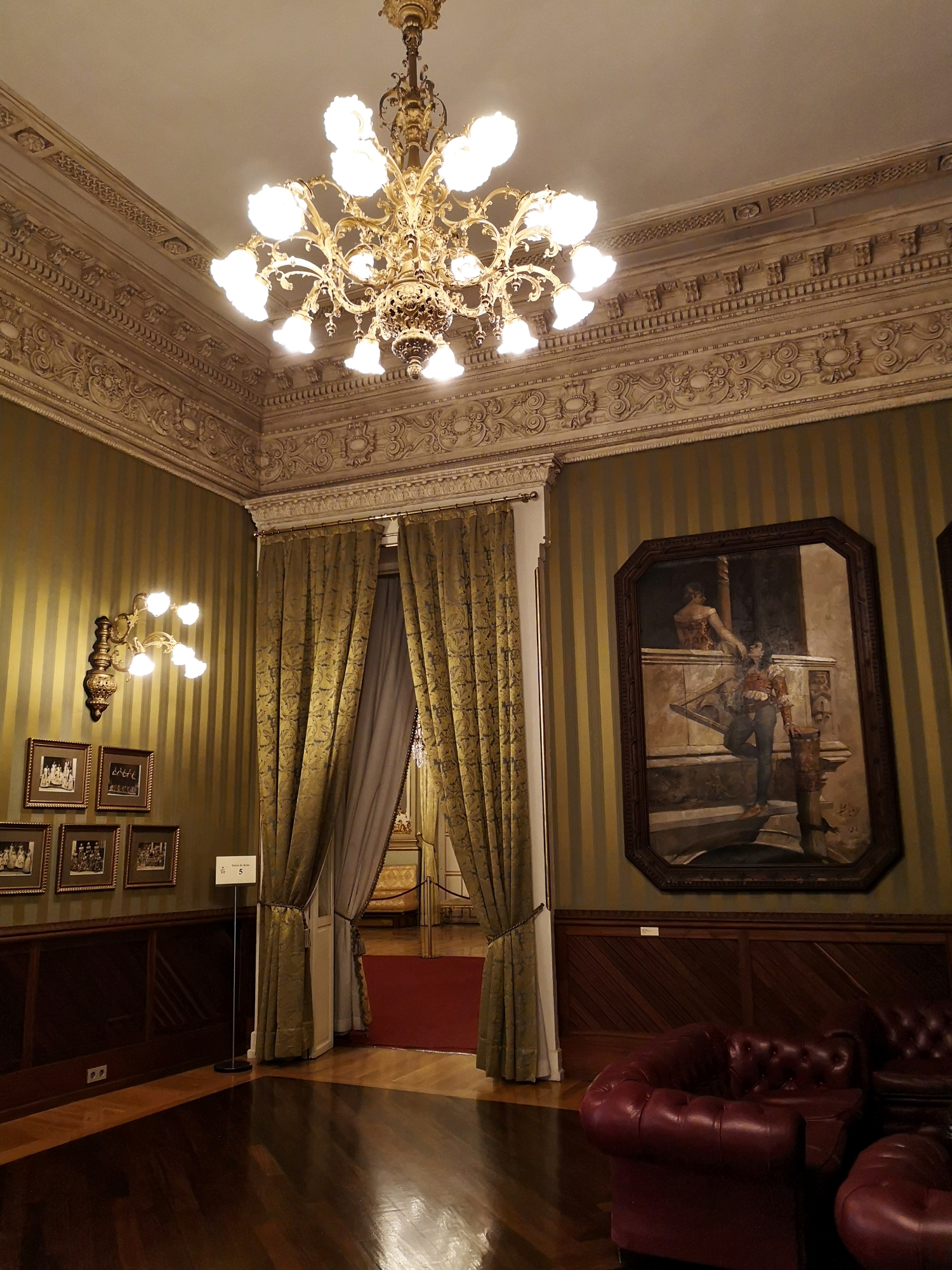
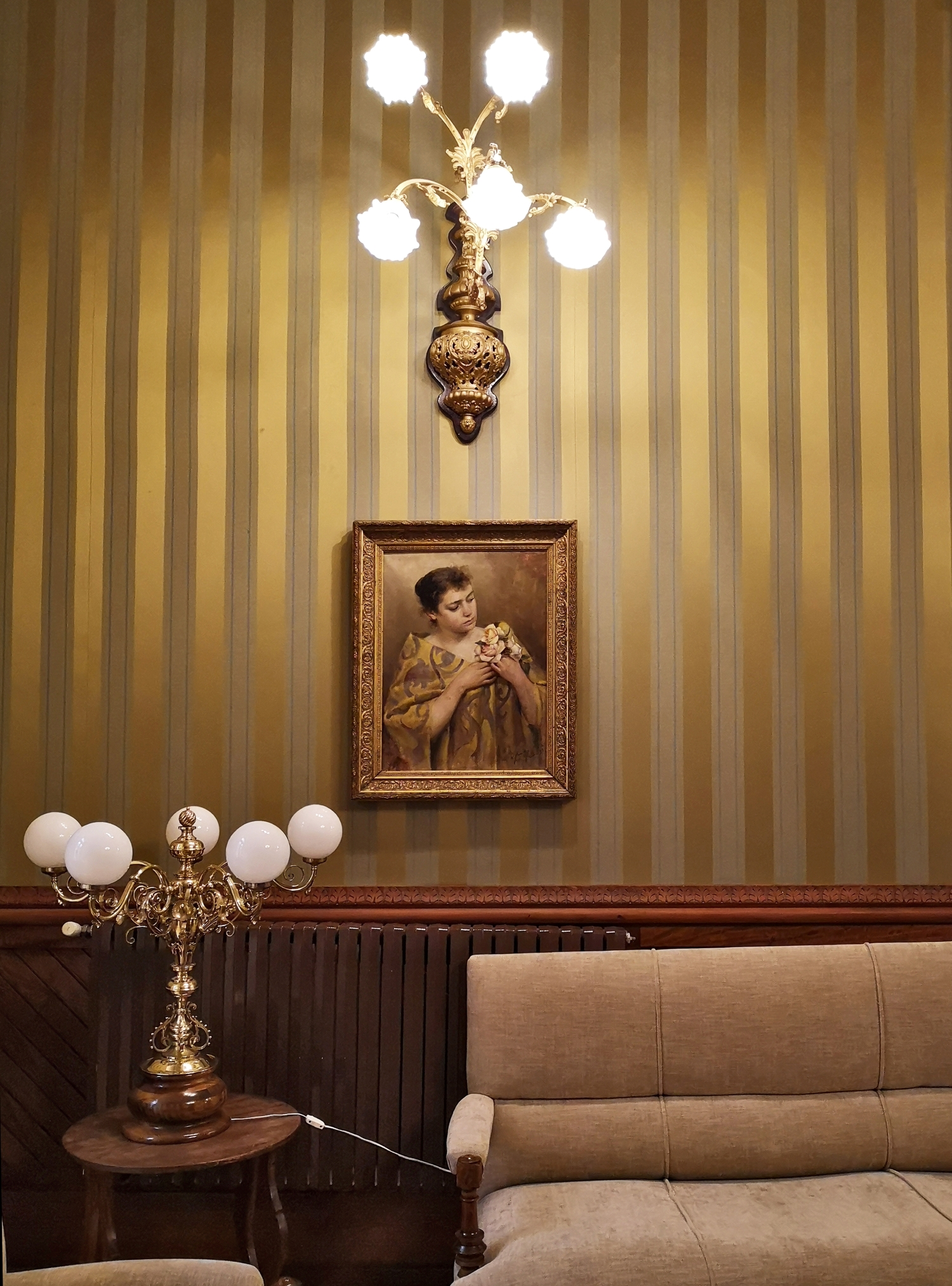
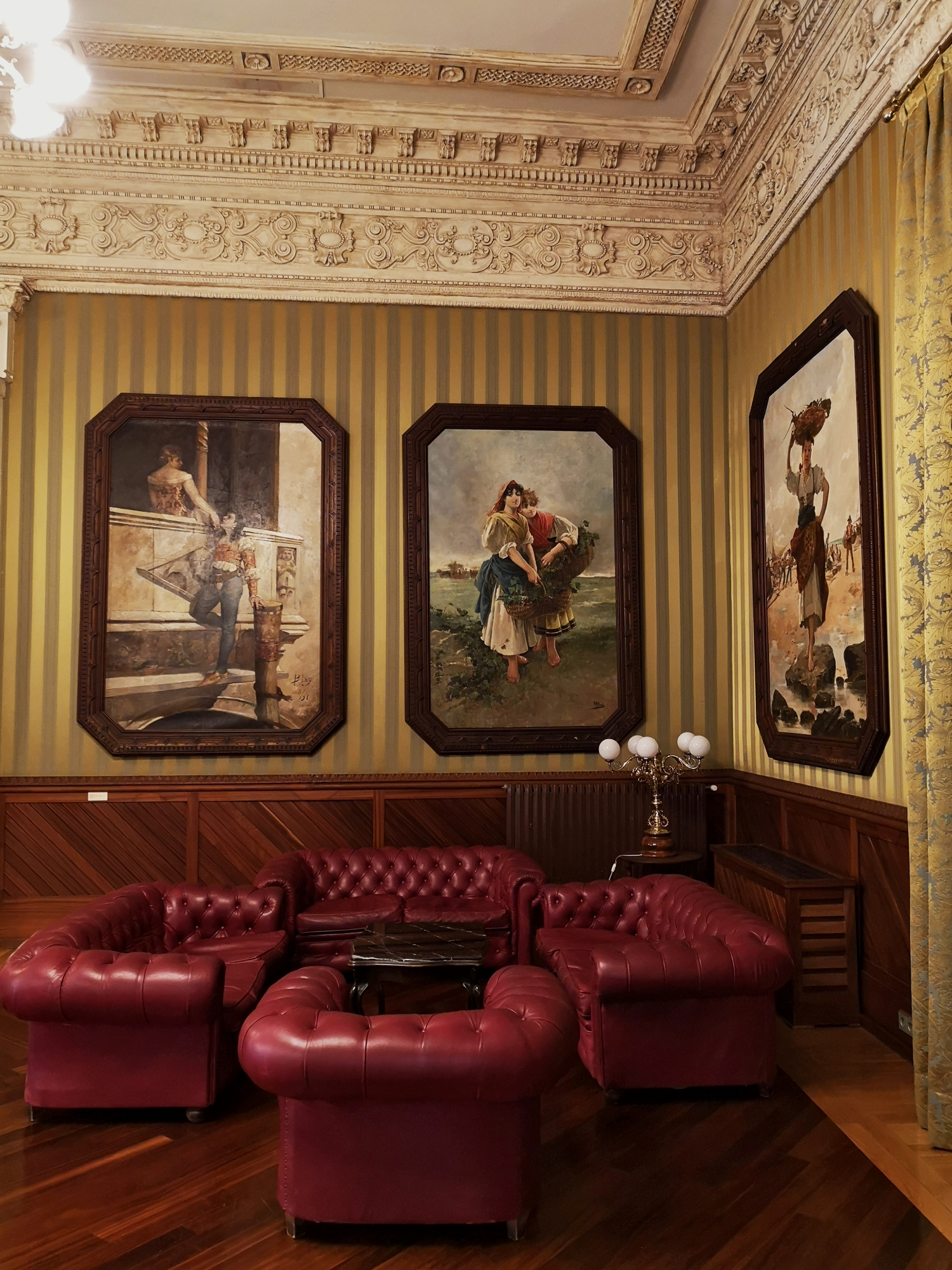
The Ballroom
From the Congresillo we access the Ballroom, that from the first glance, leaves every single visitor speechless. It was built between 1870 and 1875 in a French inspired neo-baroque style that makes you recall the most luxurious parisian ballrooms. The room has 5 huge brass, gold and Baccarat glass lamps with more than 700 bulbs, made in Paris by the French house Chalier and Jean in 1886. These were the first electrical light fixtures in the whole of Murcia.
The ceiling is decorated with beautiful paintings by Manuel Arroyo and Eduardo Gil Montijano representing four art disciplines: poetry, painting, music and architecture, together with portraits from illustrious Murcian figures such as the Floridablanca Marquis Jose Moñino, the painters Francisco Salzillo and Nicolás Villacís and the actor Julián Romea. To add to the beauty of the huge lamps and mirrors, the room also has a remarkable wooden floor, original from 1877.
The ballroom was very popular amongst the upper Murcia classes during the last century and many balls were celebrated there with the musicians playing behind the balconies.
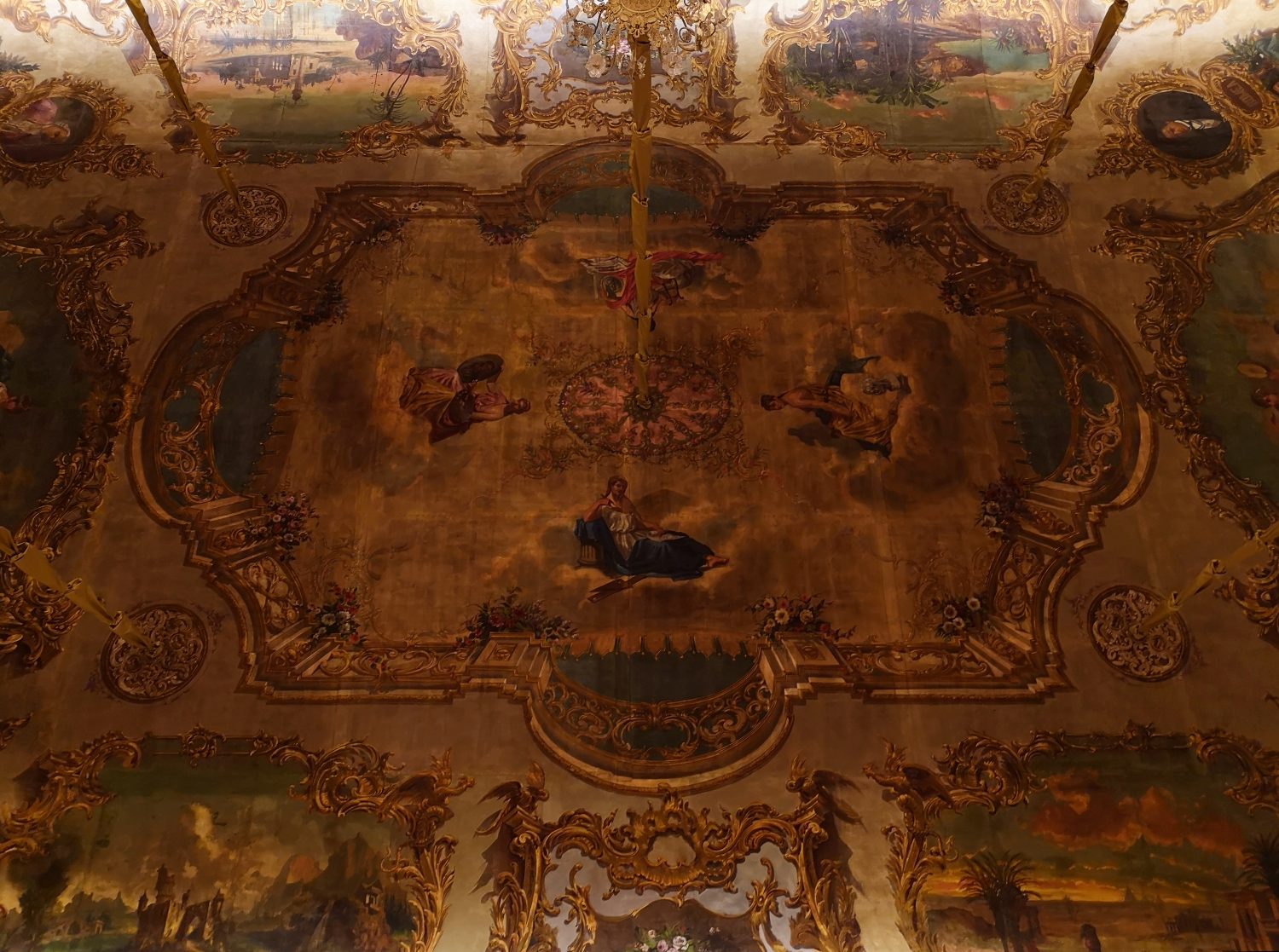
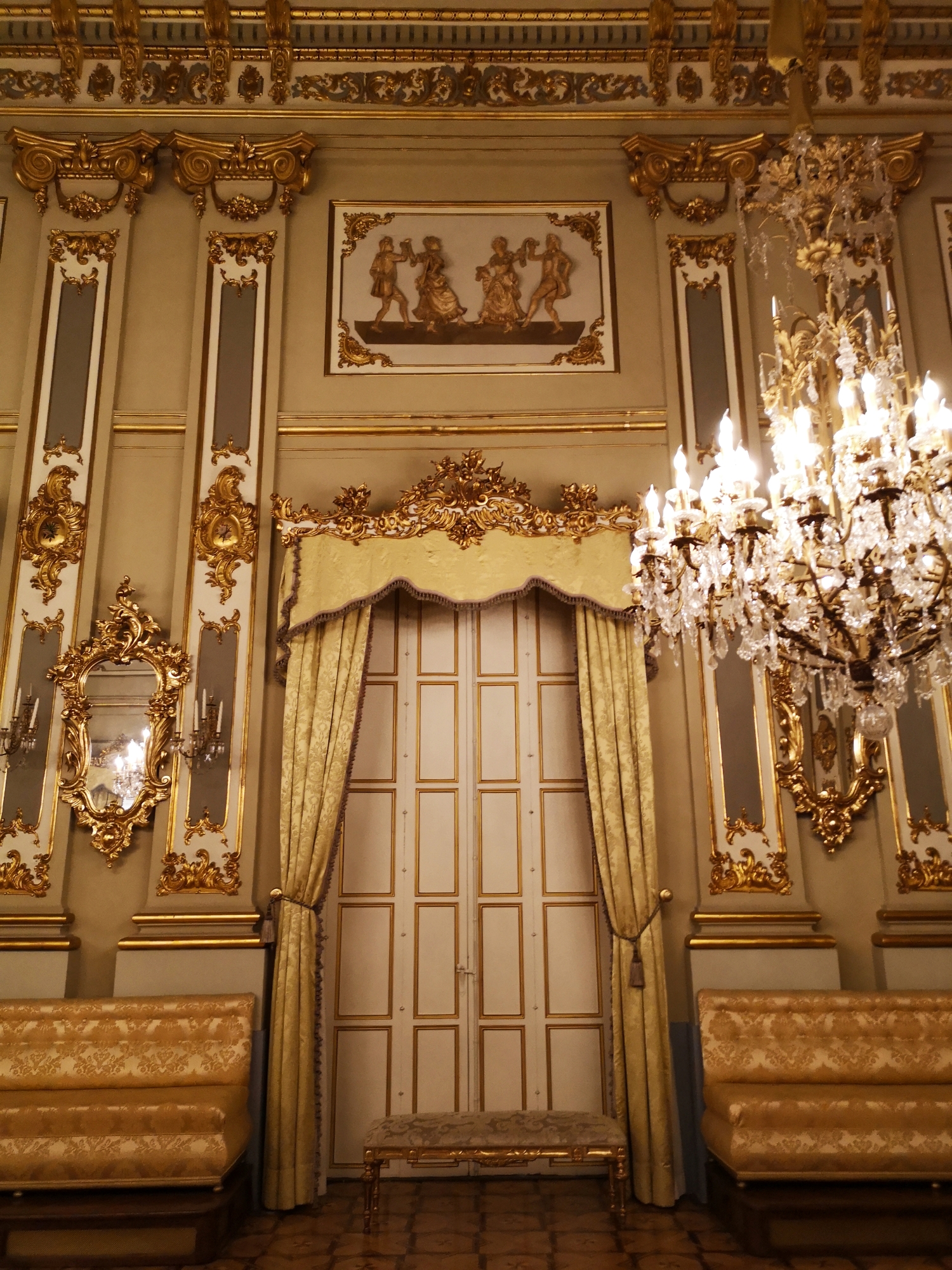
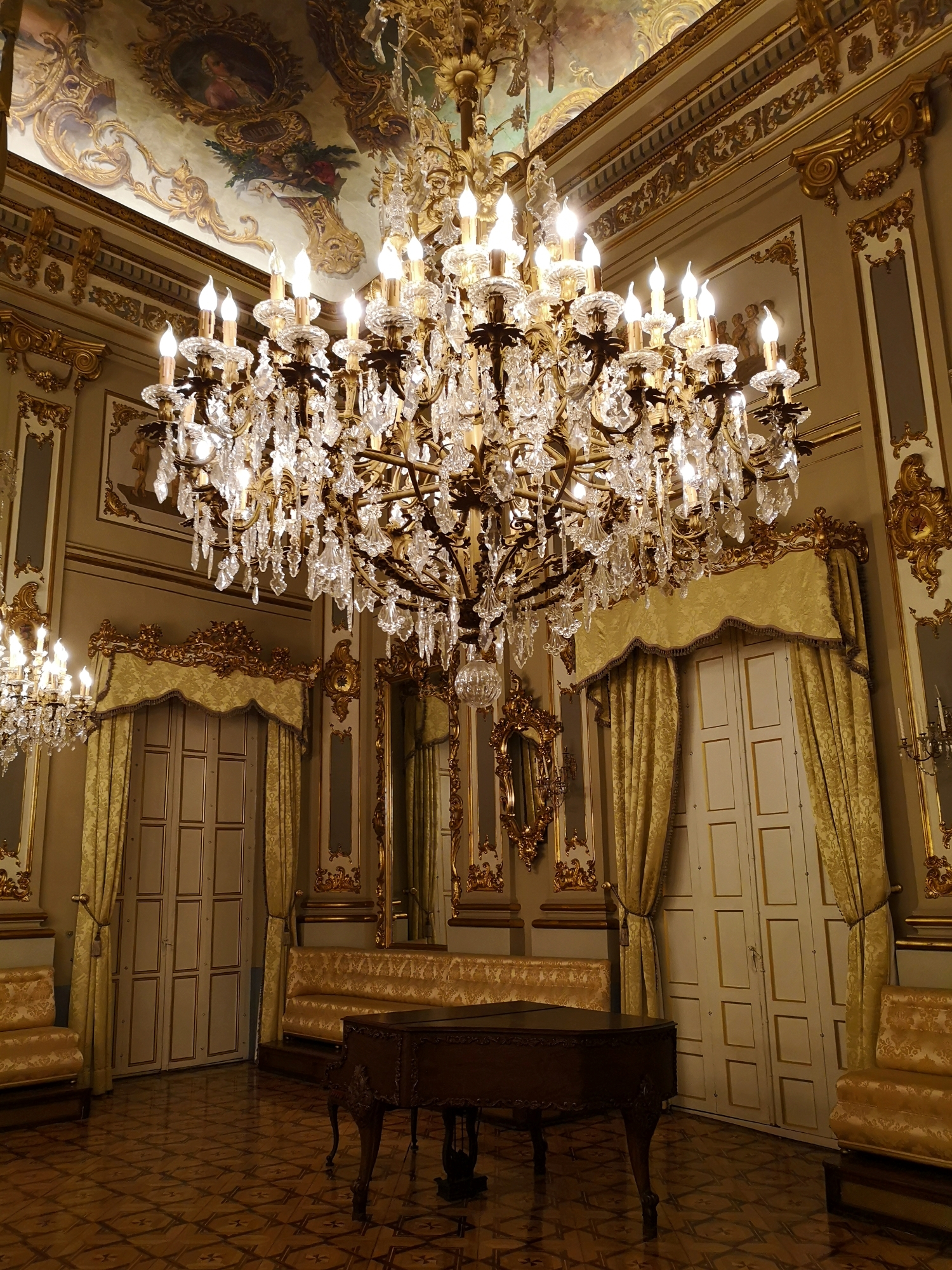
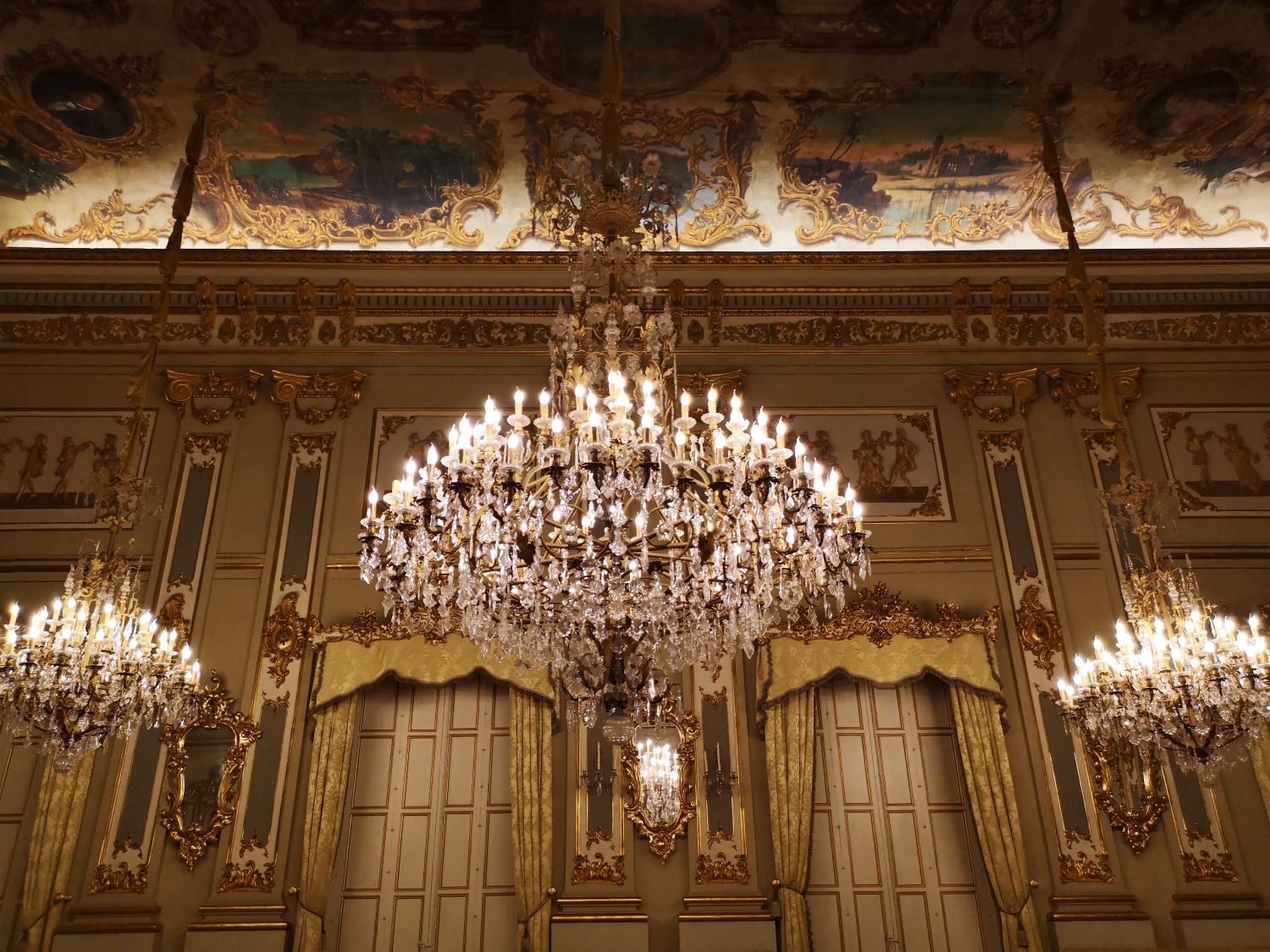
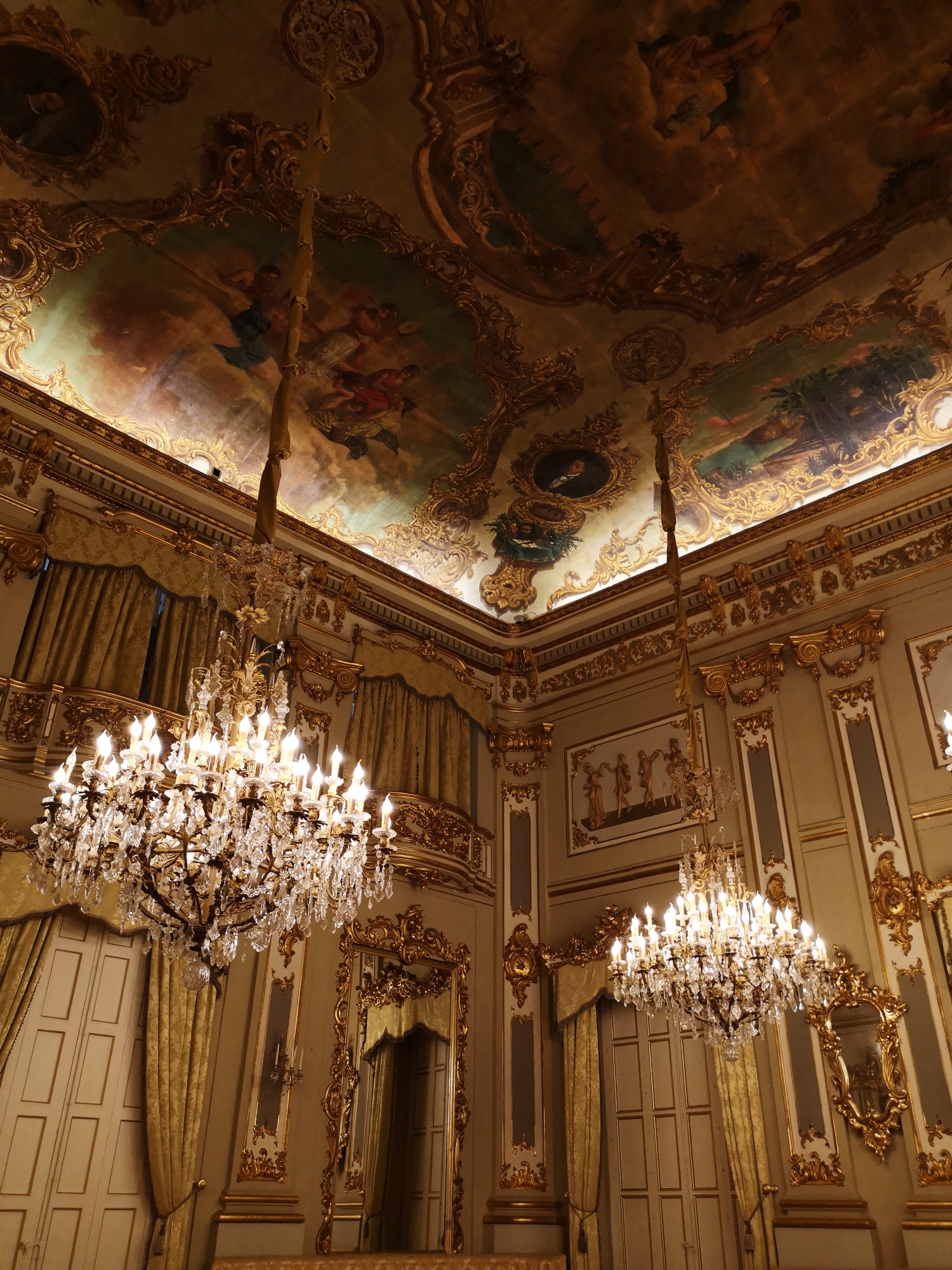
Anteroom and Pompeian court
Directly from the golden warm tones of the Ballroom, the visitor arrives in a geometric, bright and cold space, the anteroom, leading to the Pompeian court. The light enters directly to create a spotlight over the court that compliments perfectly the marble floors. It’s worth mentioning the paintings by Gil Montijano and Sánchez Picazo, “Estudio del pintor” and “Cesto de flores”, along with a nice bust sculpture by José Planes. Crossing the anteroom we find two statues looking at the Pompeian court, replicas of “Danae” and “La Amazona” by Policleto from the Vatican Museum.
The Pompeian court is one of my favourite places in the Casino. This court in neoclassical style was finished in 1893 with the 14 ionic columns and it’s illuminated by another iron and glass dome. In the center of the court we find the “Venus” by José Planes, who won the National Sculpture price in 1920.
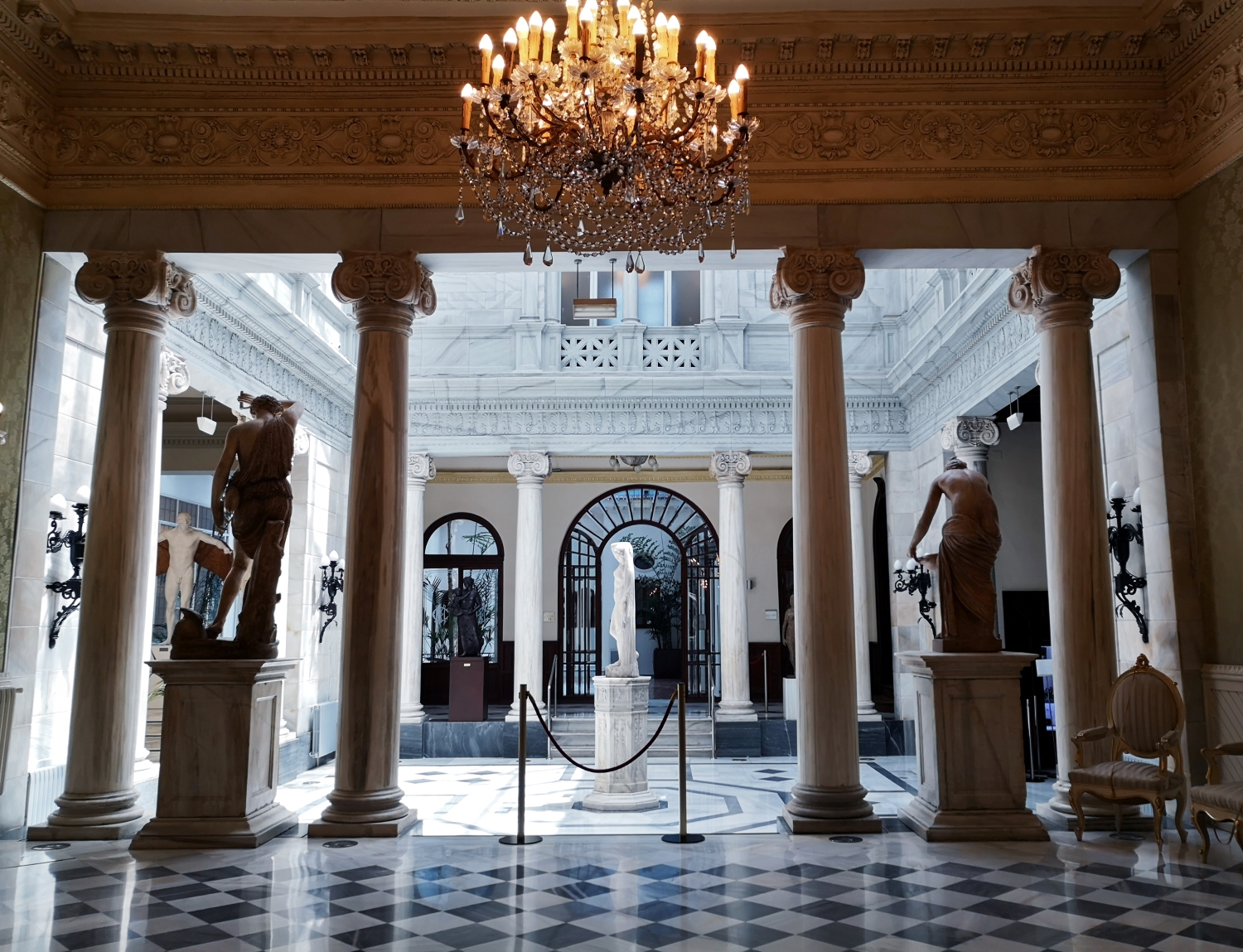
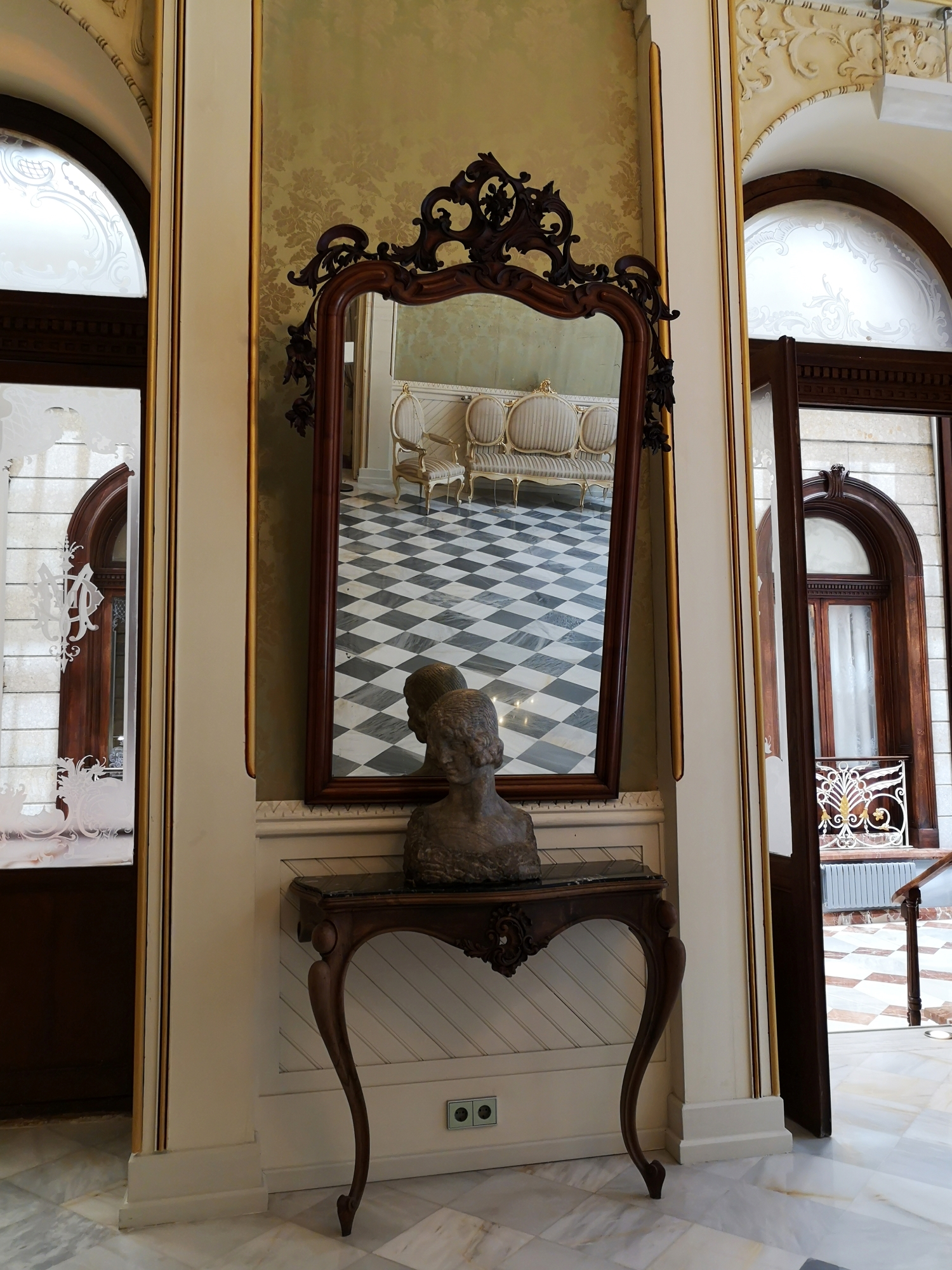
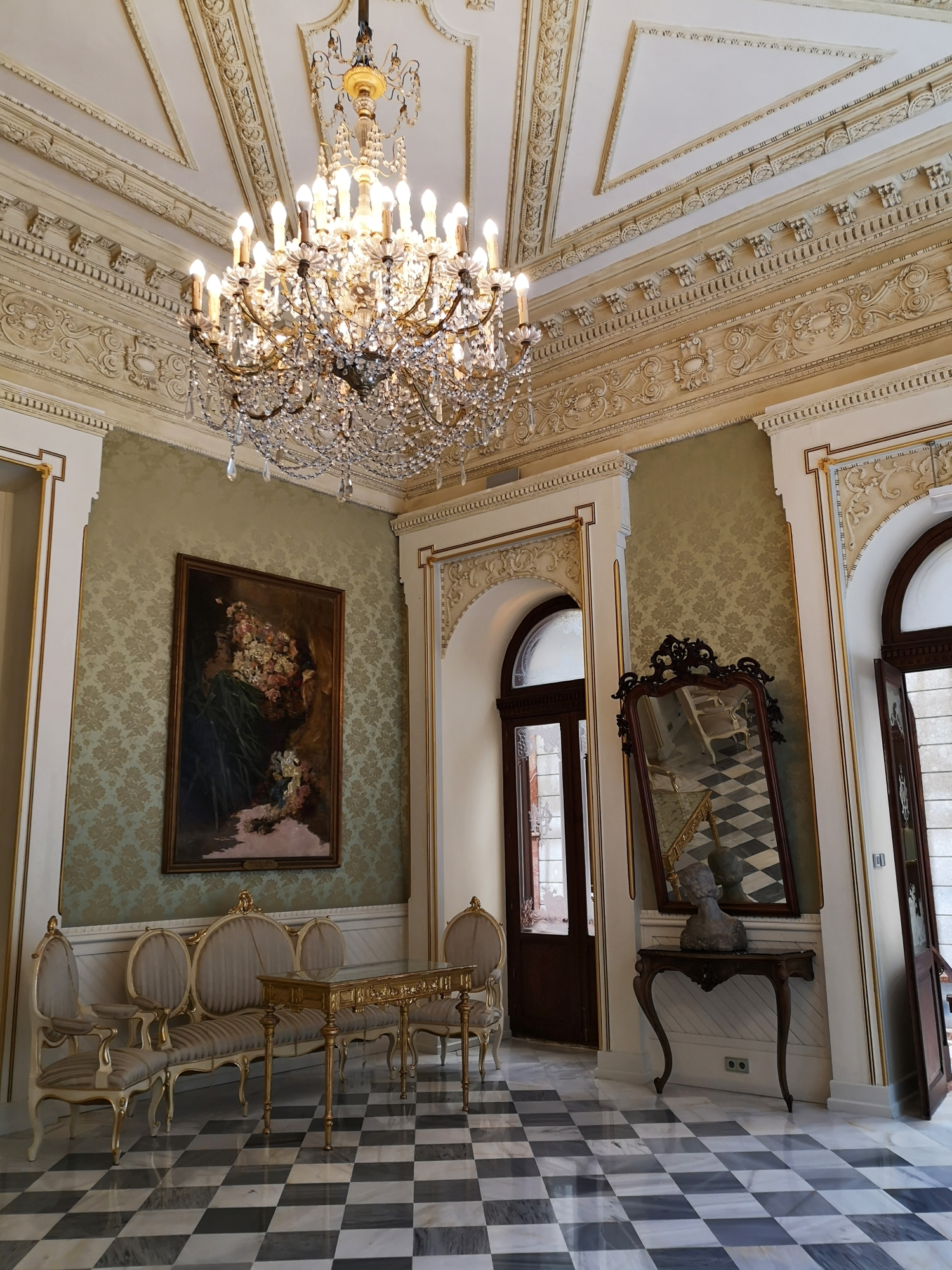
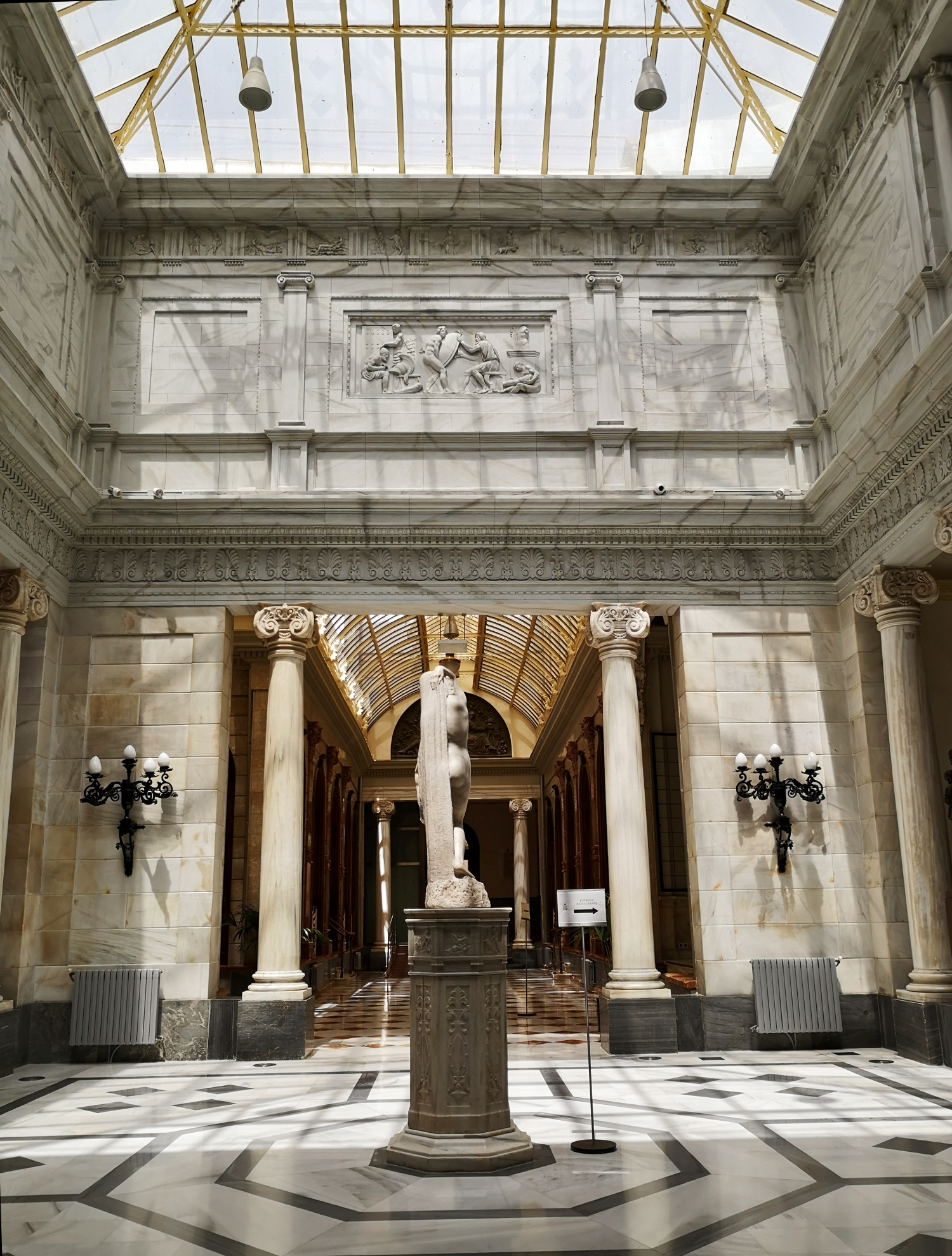
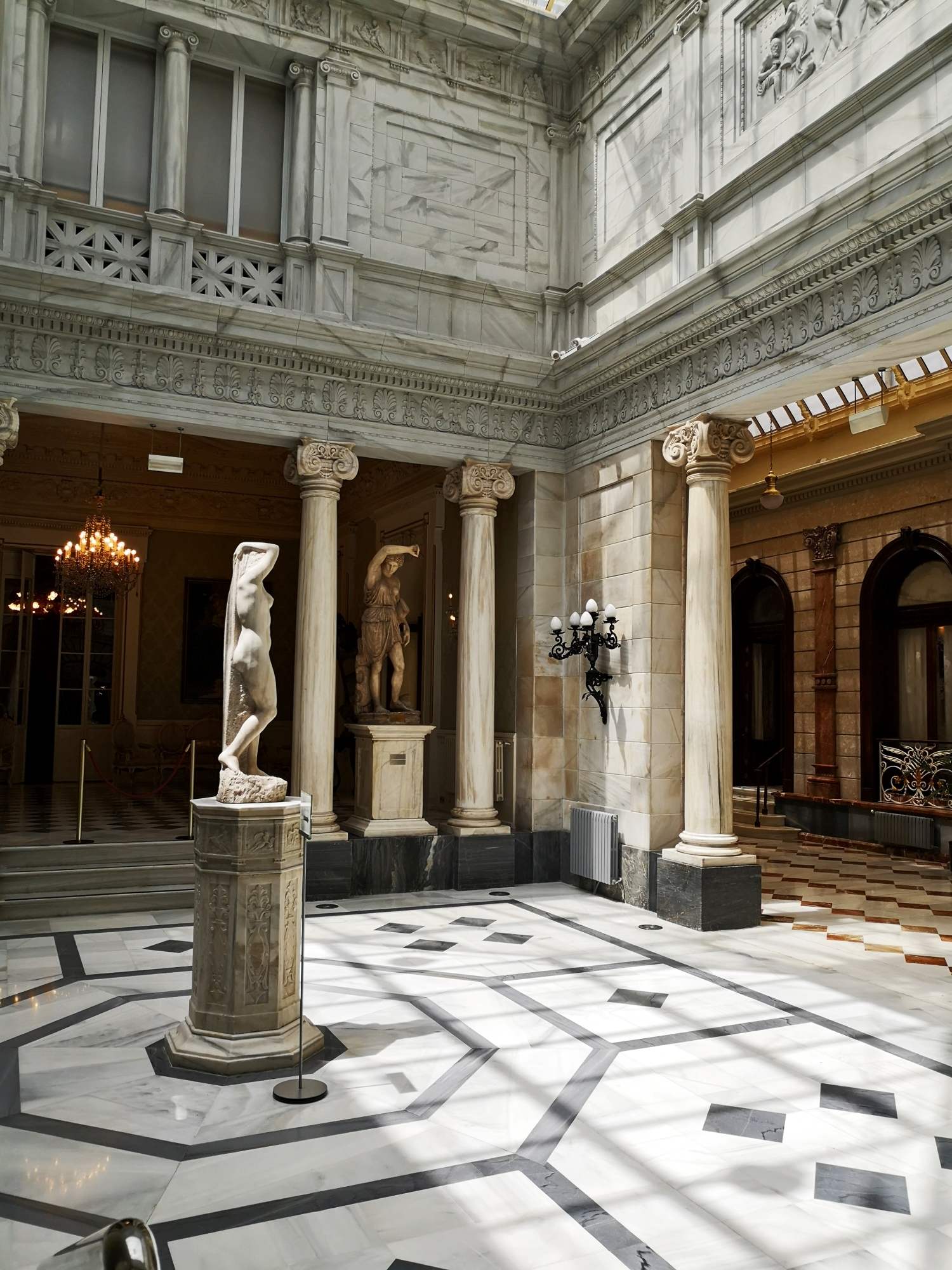
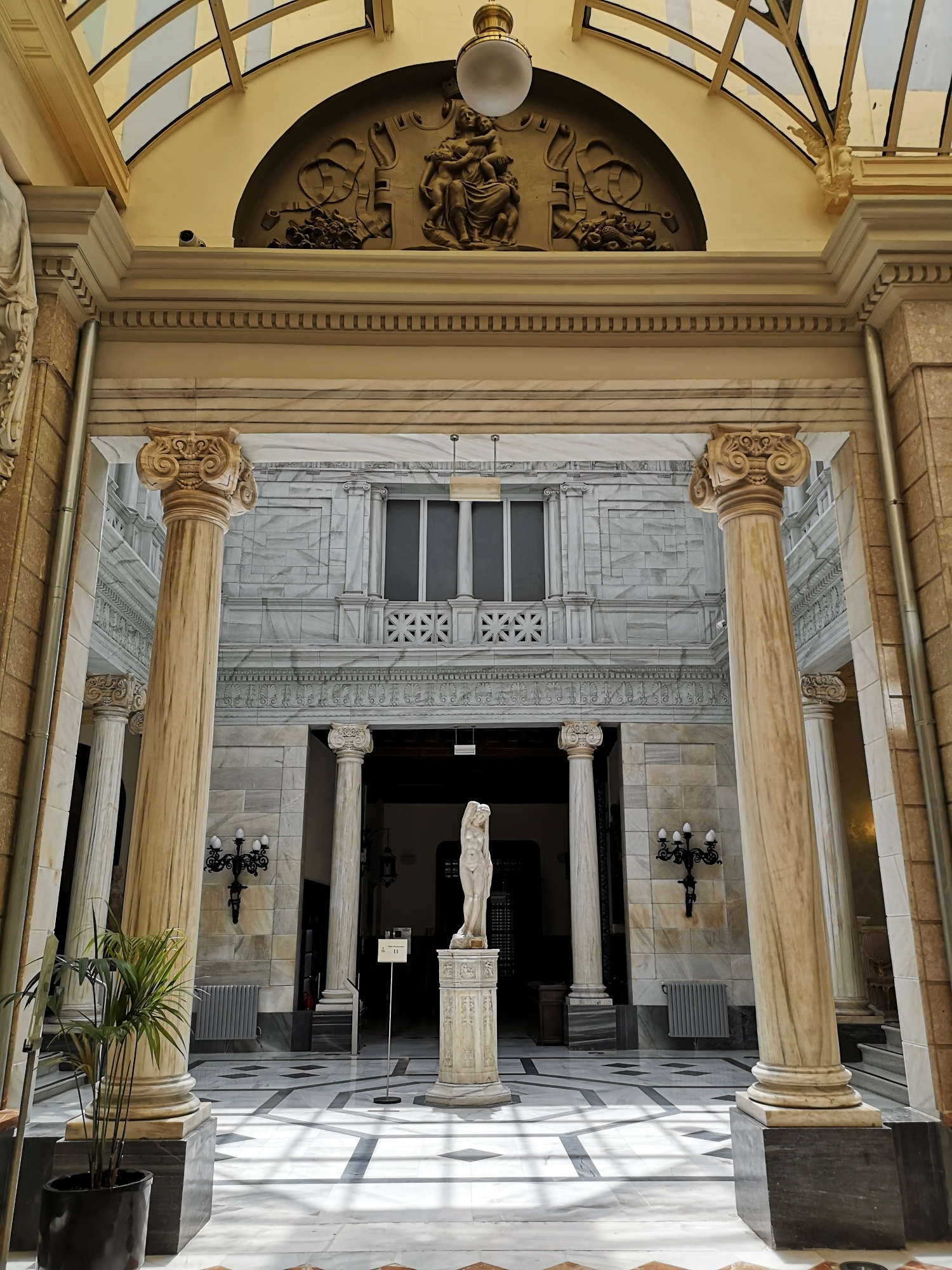
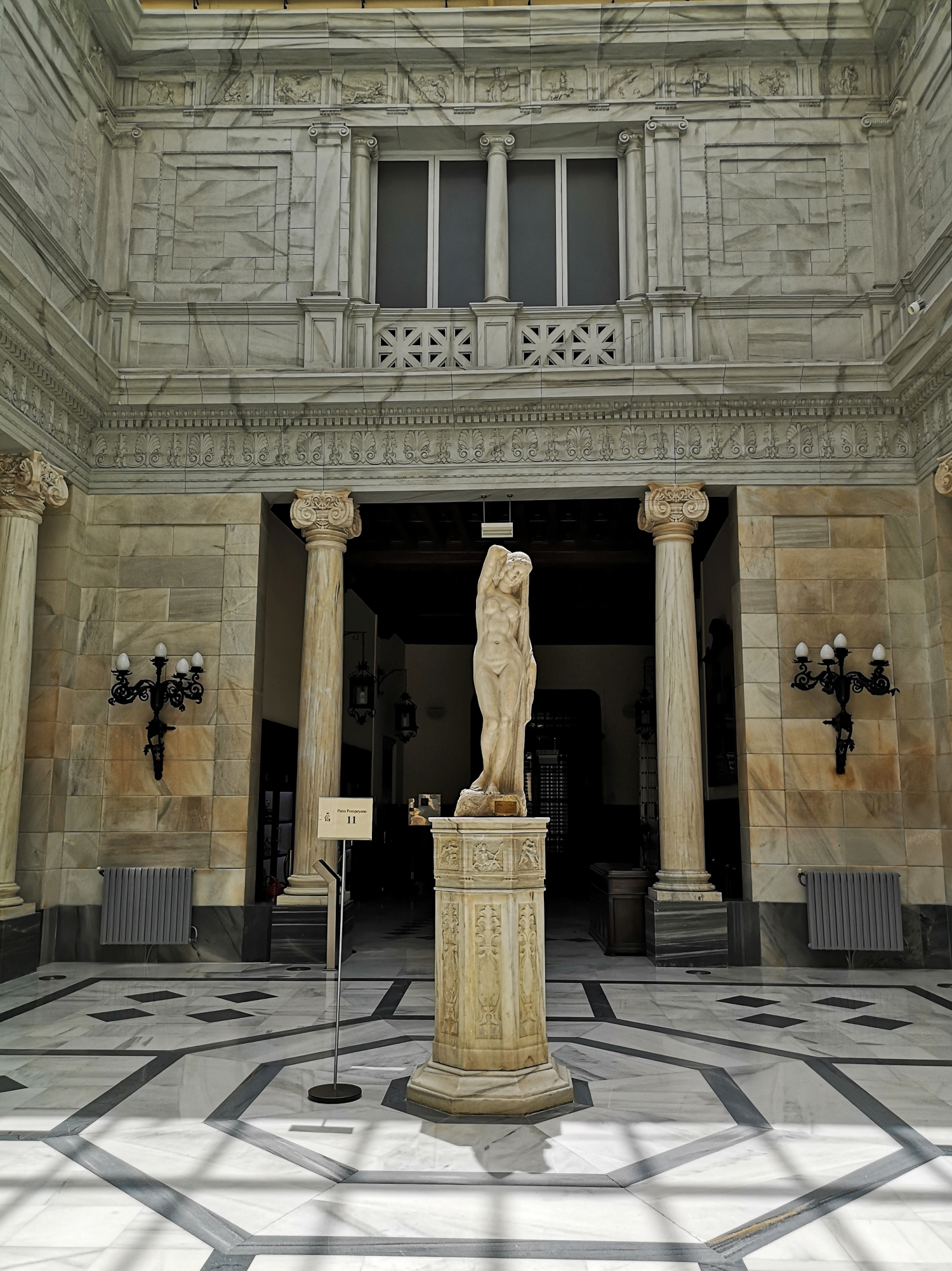
Ladies room
Right in front of the Pompeian court there´s a peculiar space, the Ladies Room. Upon entering, one sees golden mirrors, silks and furniture giving an impression of neo-baroque decoration but then the ceiling painting from 1922 caught the eye and creates a really interesting contrast. The painting, by José Martín Baldo, represents the night and the Greek goddess of the moon Selene. As a curious fact, the eyes of the winged woman wrapped in flames descending from the sky will follow you all around the room.
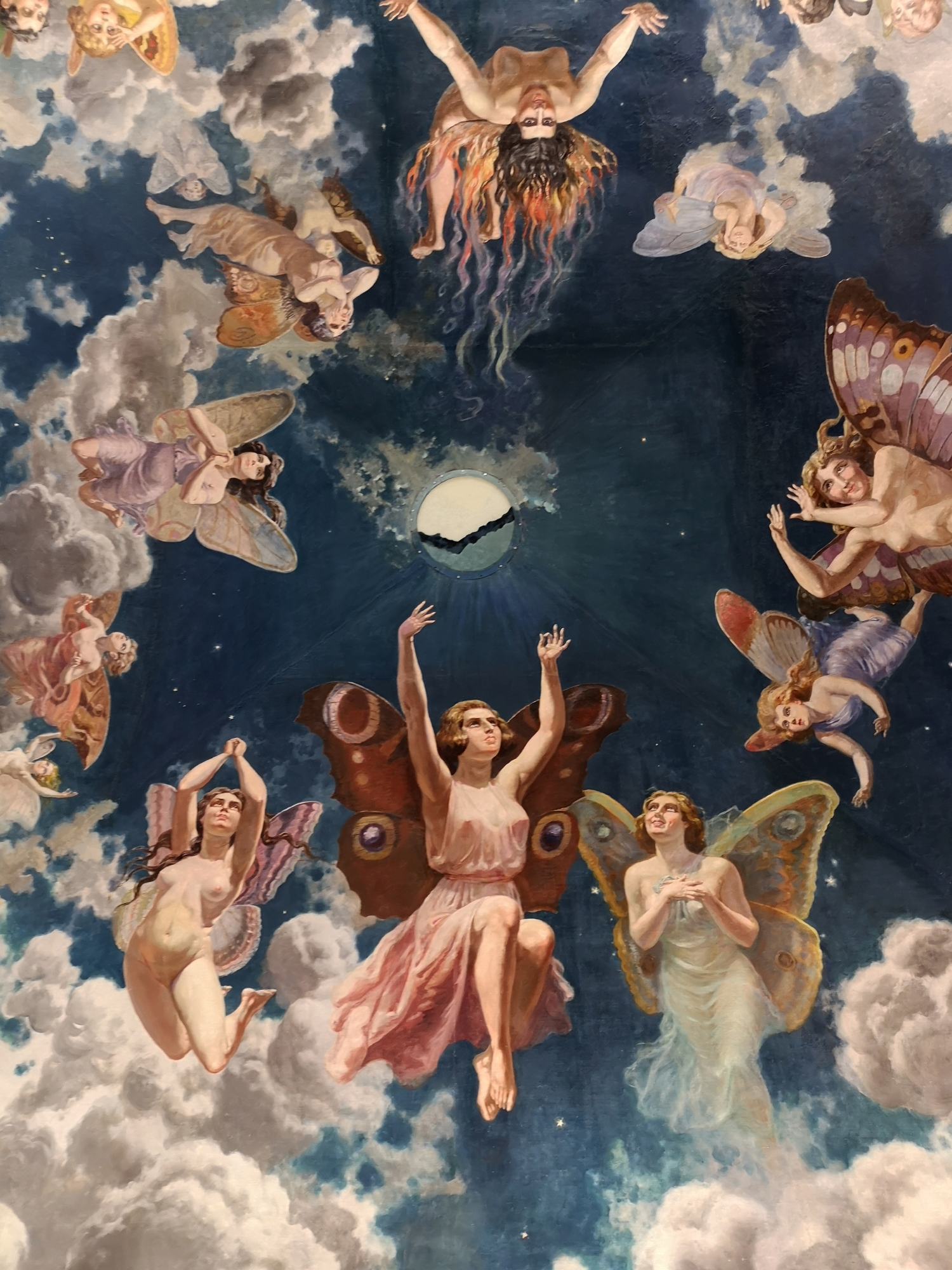
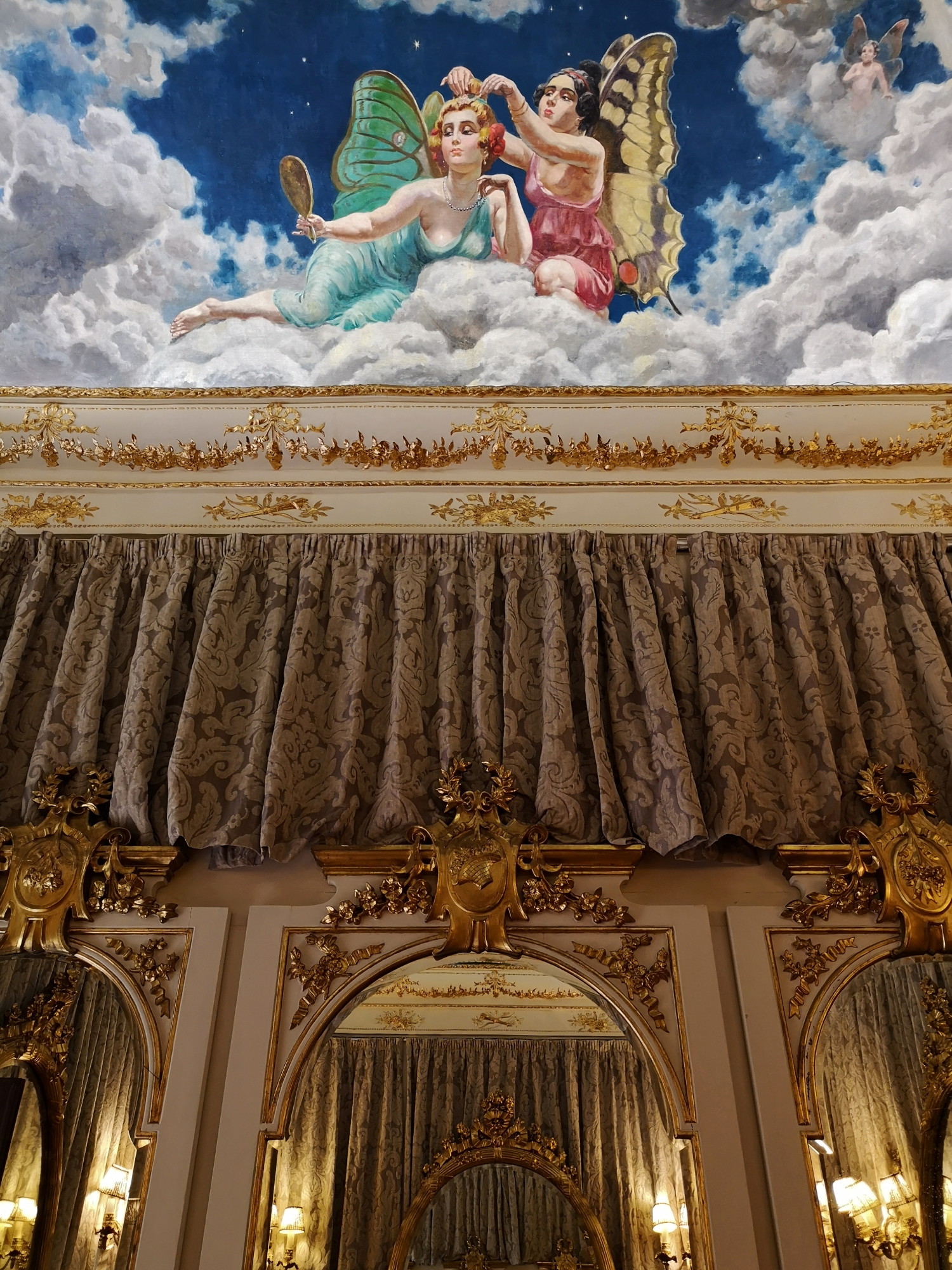
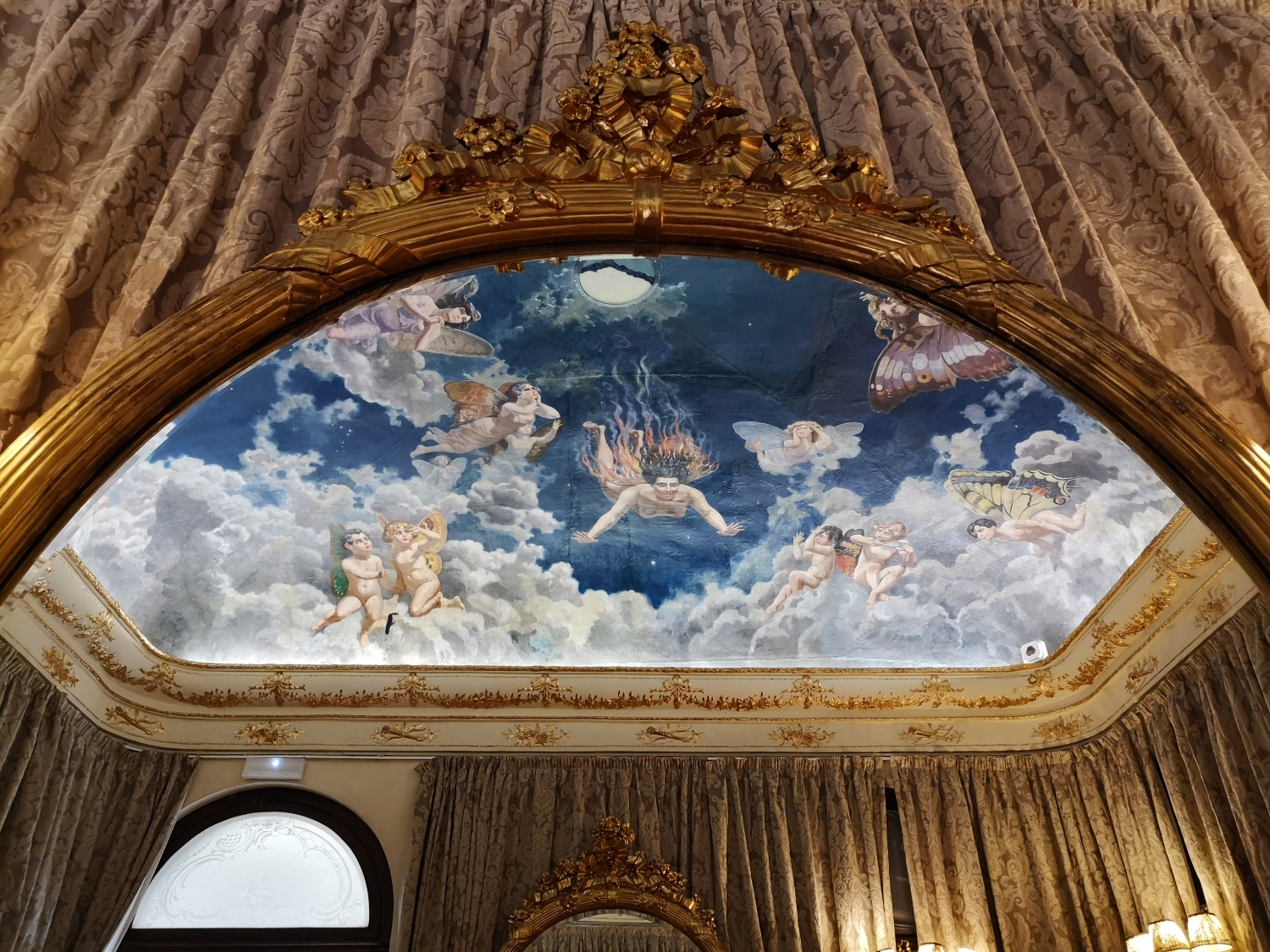
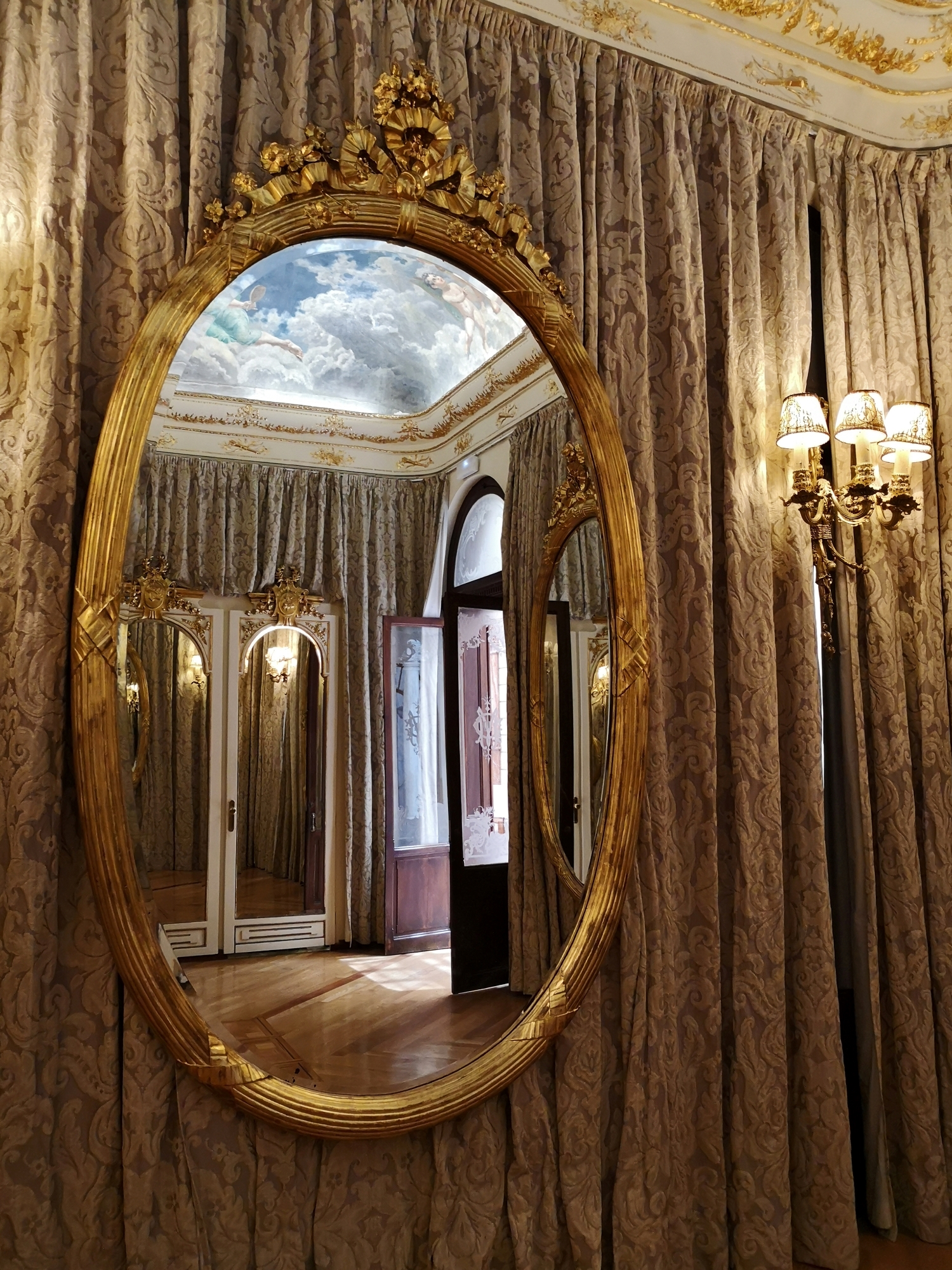
Billiard room
This room is actually members only but I was lucky enough to find it empty so I could take some photos of it. Original from 1890, it’s panelled floor to ceiling in dark wood and the original lamps and furniture are worth a look. The room has held important billiard championships in the past.
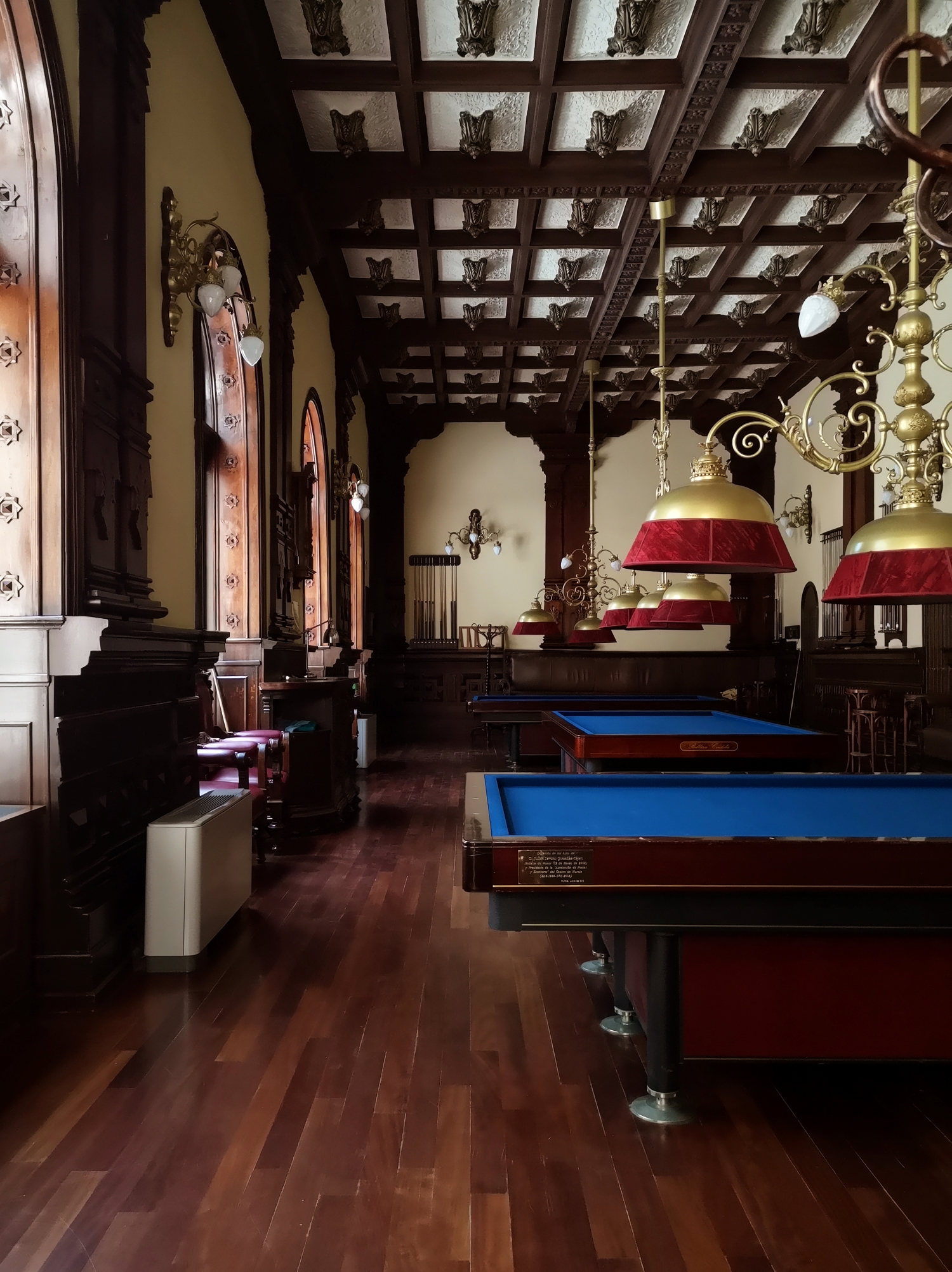
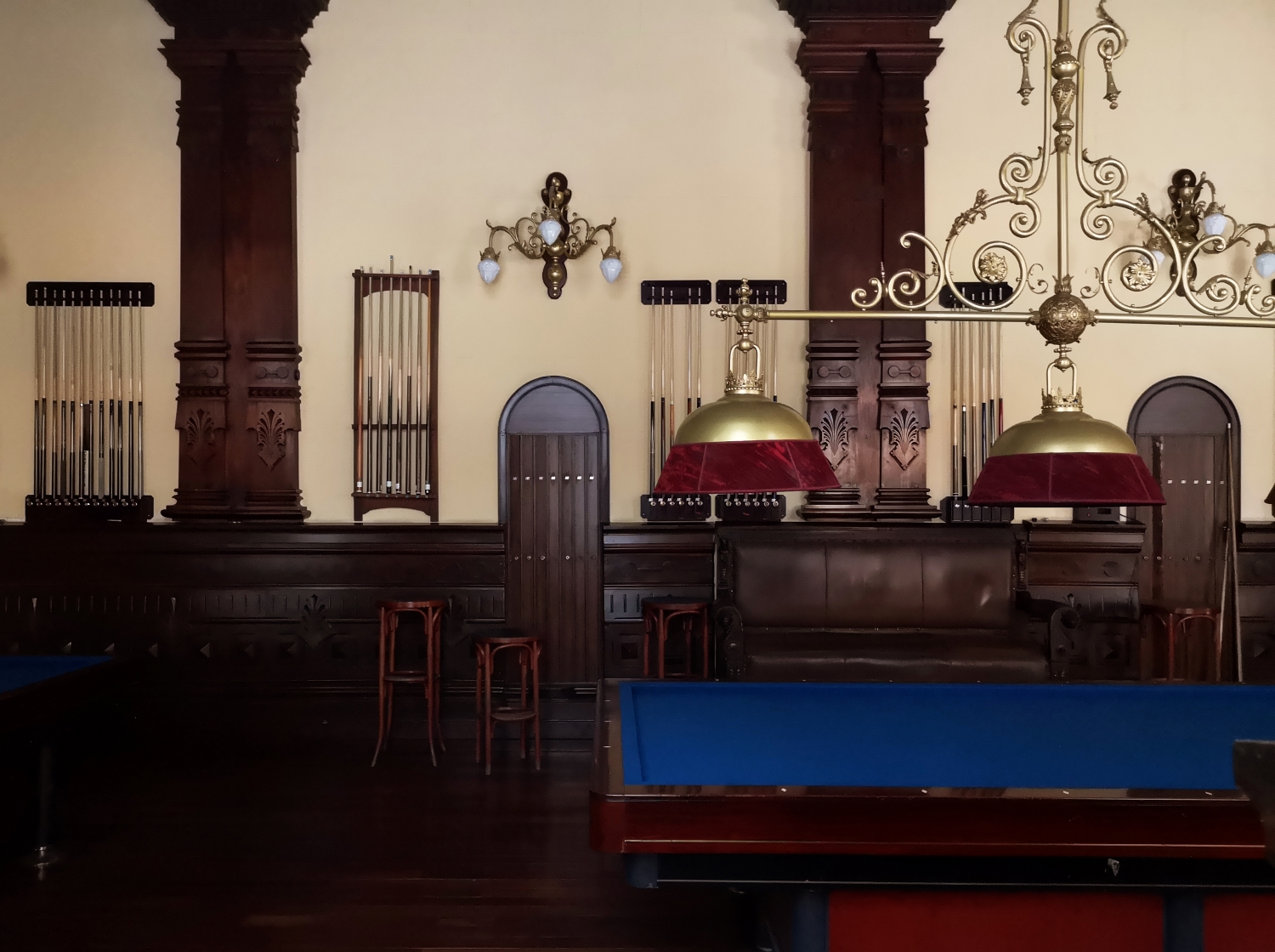
Blue court
This beautiful space used to be a opened courtyard, as it was a mixture of the different buildings that were integrated during the years by the Casino society, in the last refurbishment in 2006, an iron and glass dome was added to make this a more useful and warmer place for celebrations and events. It still keeps its beauty intact recreating an Andalusian patio with a little well in the center.
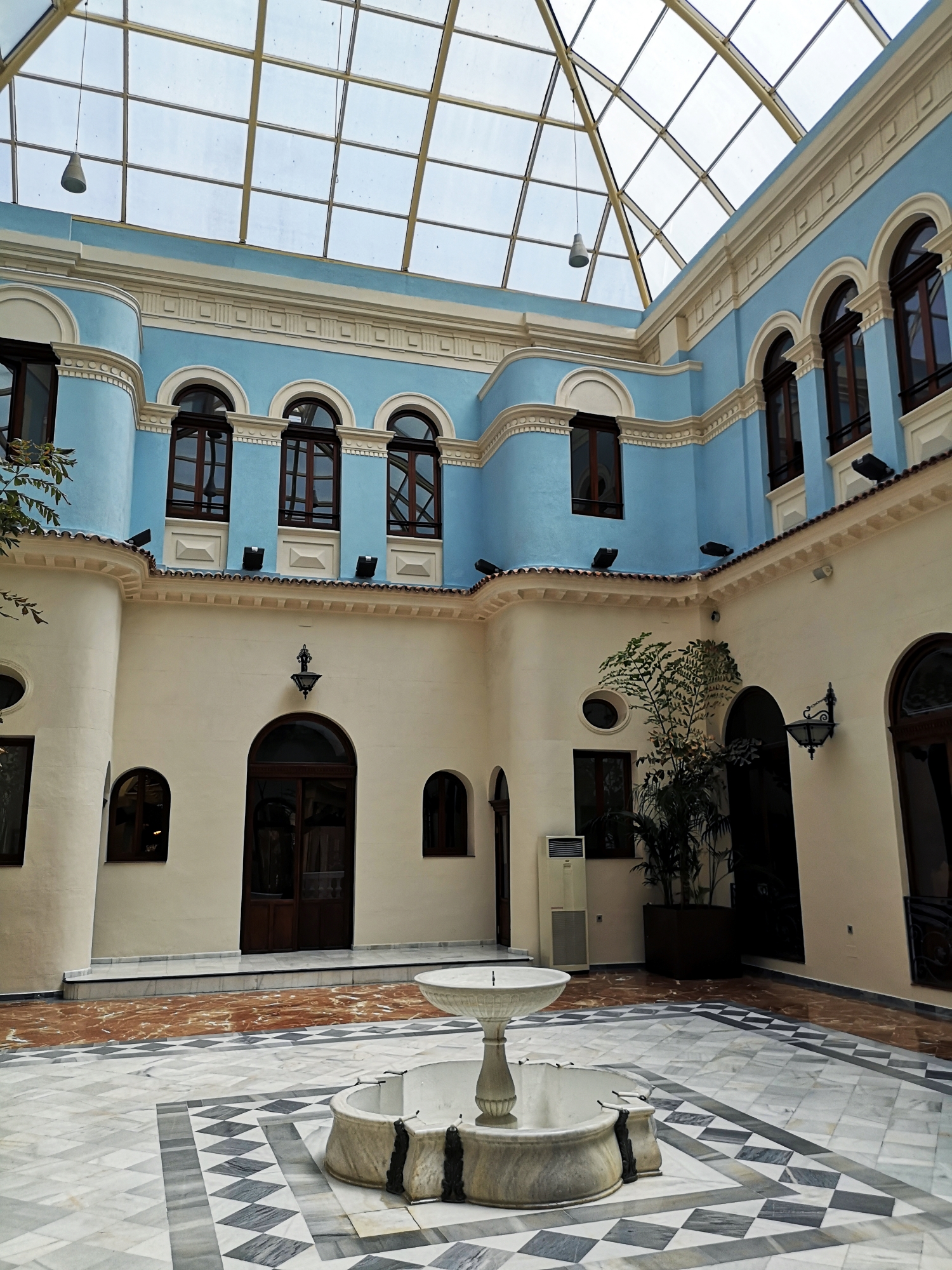
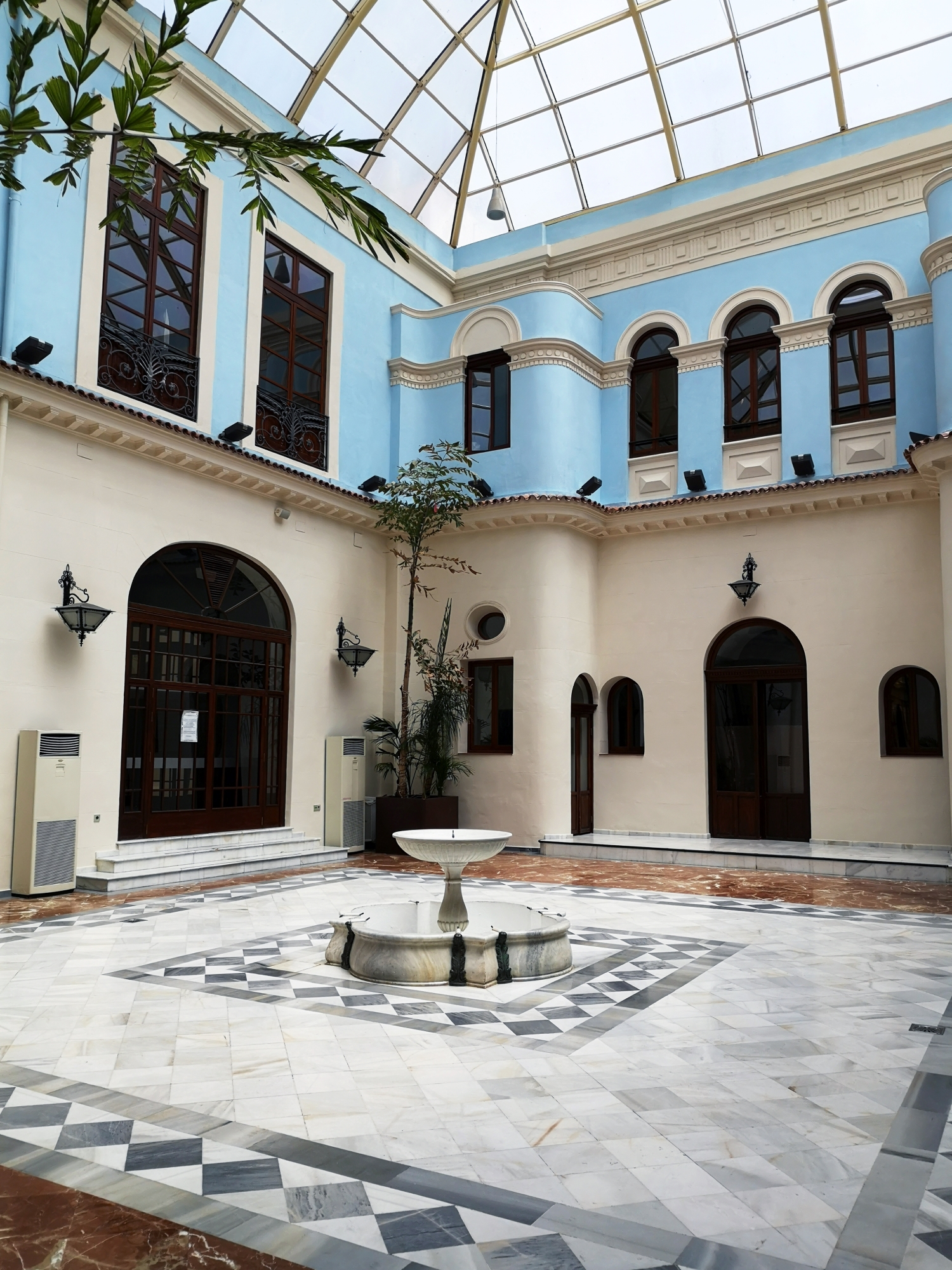
Arms Hall and Tea Room
These last two rooms of the Casino are nowadays used for exhibitions and events, but still worth of a mention because of their beauty. The arms hall was originally a place for sports like fencing or chess, but is mainly popular for the 4 paintings by Obdulio Miralles commissioned in 1893 representing an allegory of the four seasons (and the different social classes in Murcia), that originally were meant for the Pompeian court.
The tea room was all set up for a wedding celebration when I visited, but I was lucky enough to admire its reliefs and lamps. The ceiling collapsed during the 70s, but it was restored to its original look from 1847 in 2006. With an English tea room inspired decoration, this space is used as a café and restaurant throughout the year when not rented for private events.
